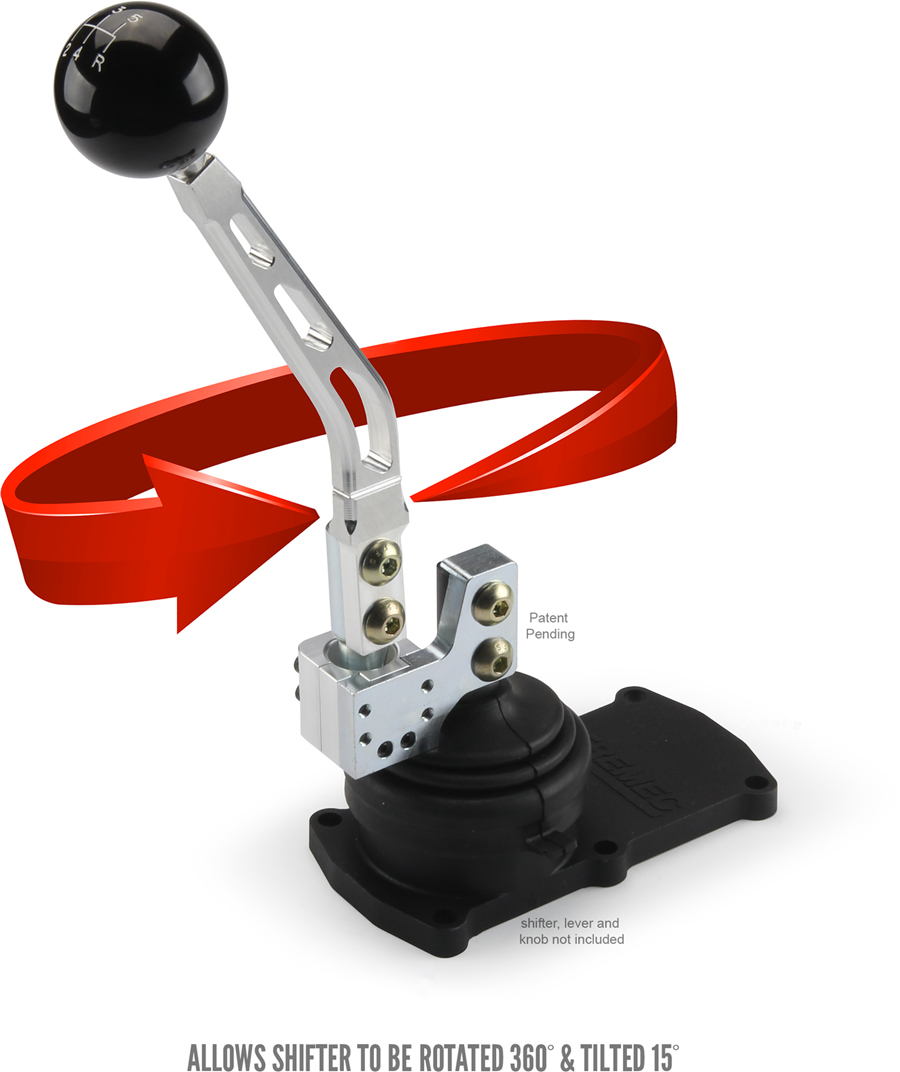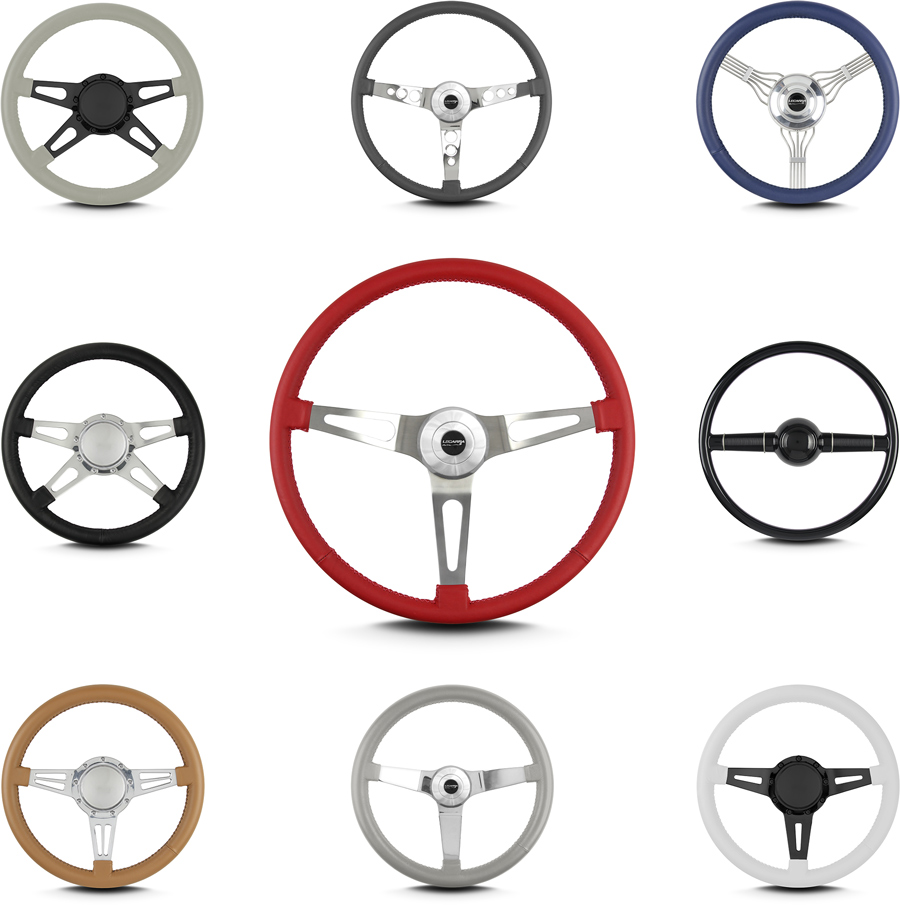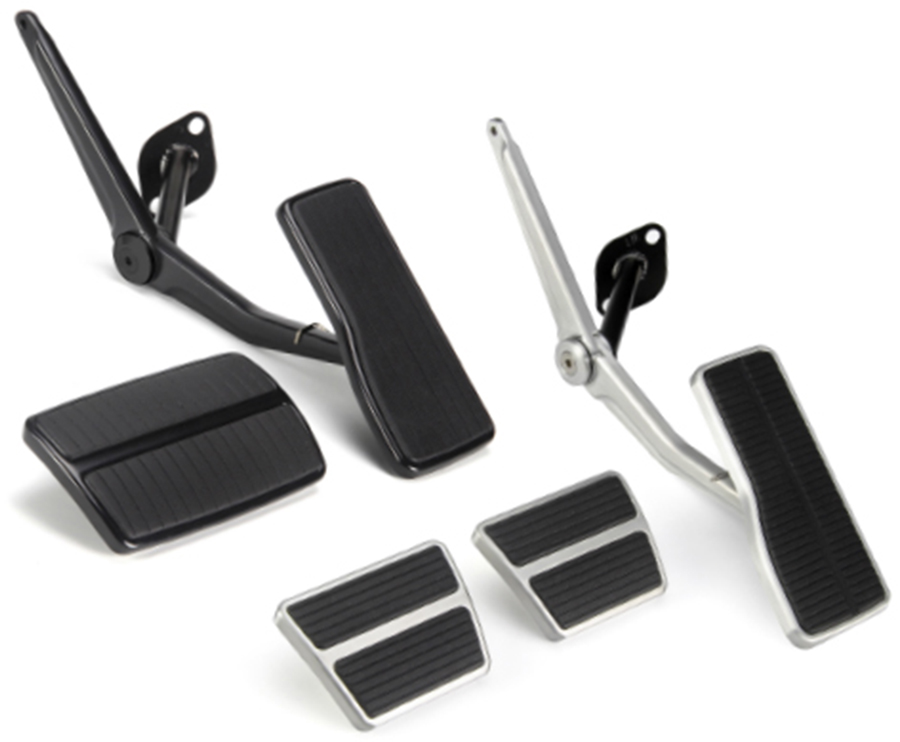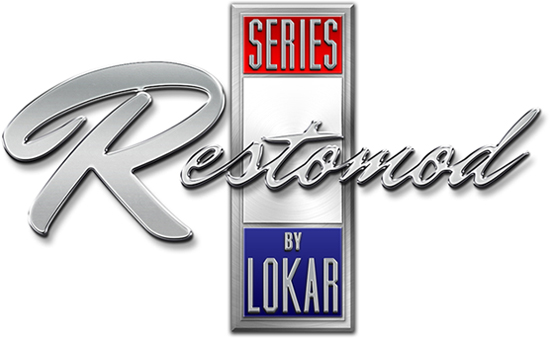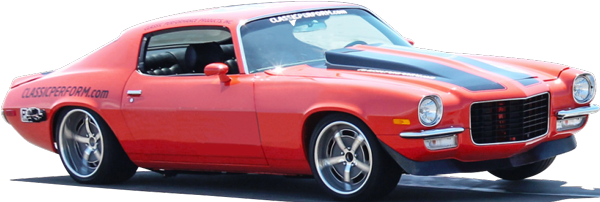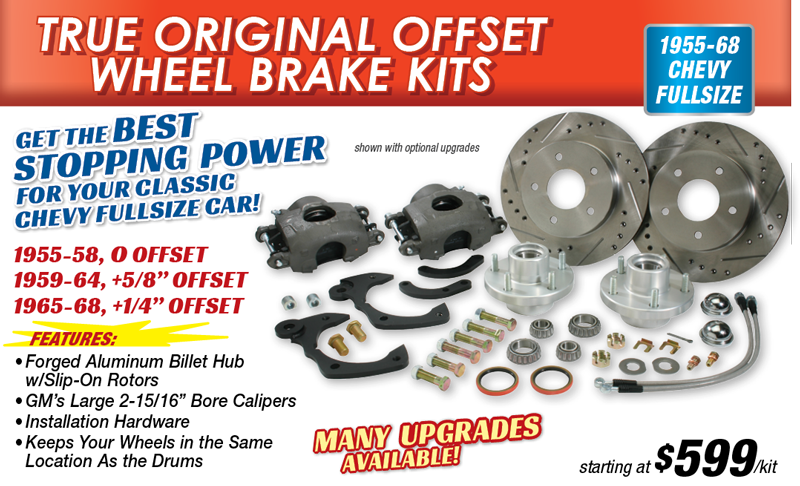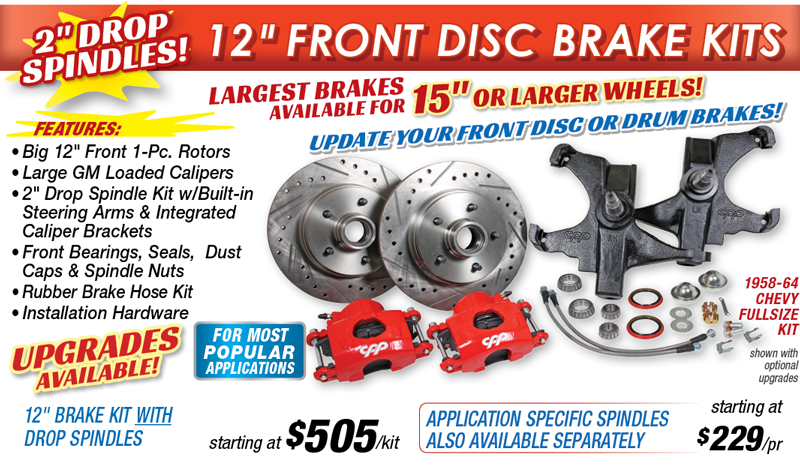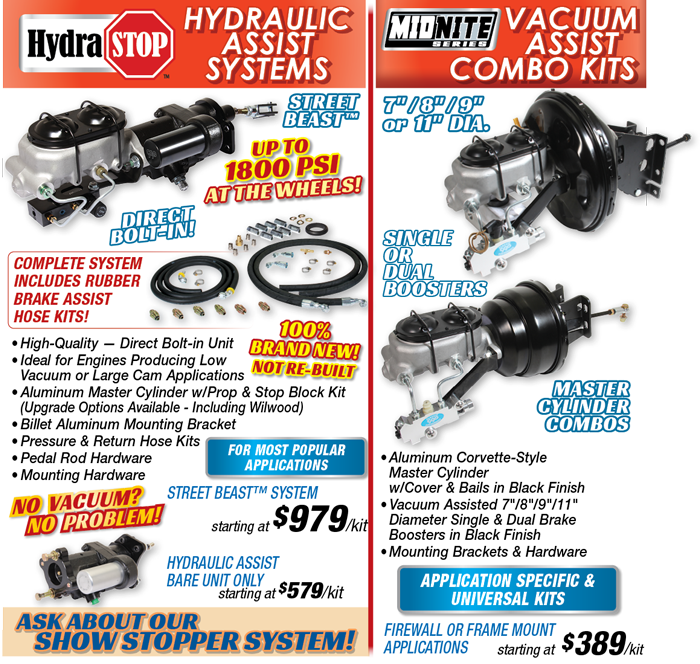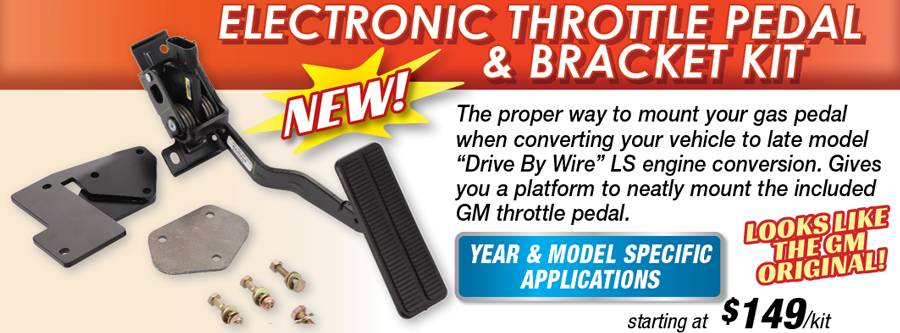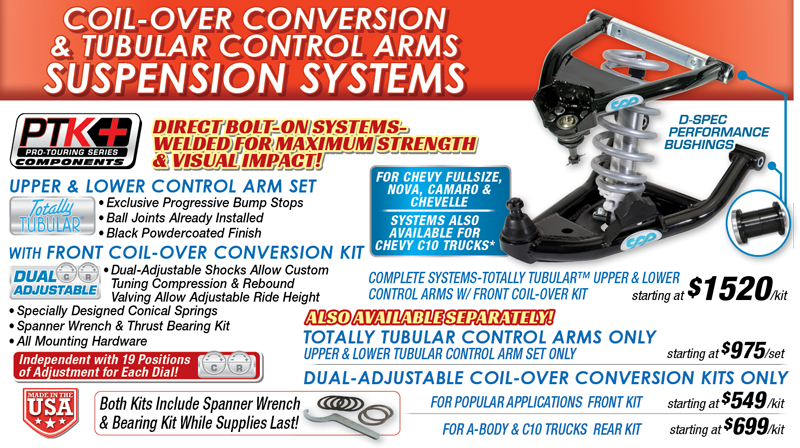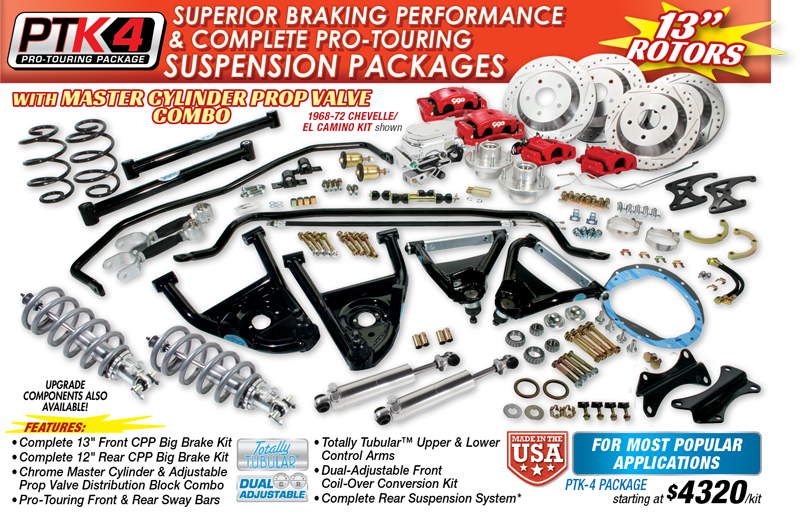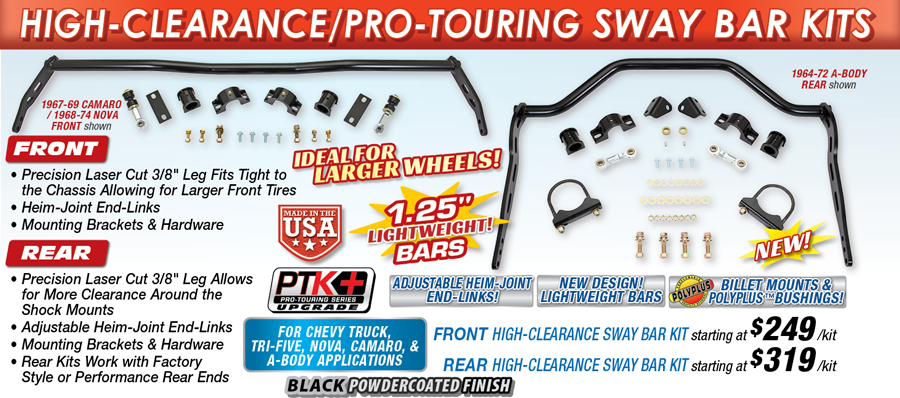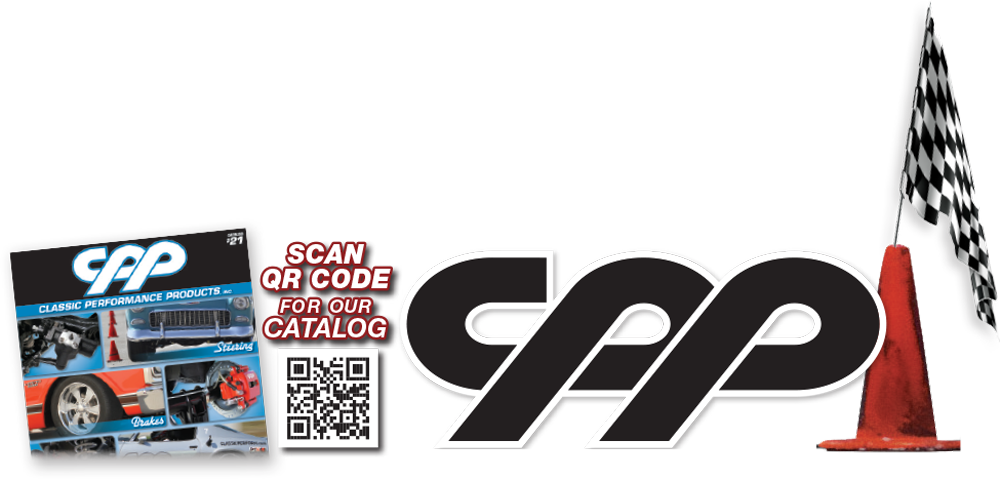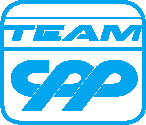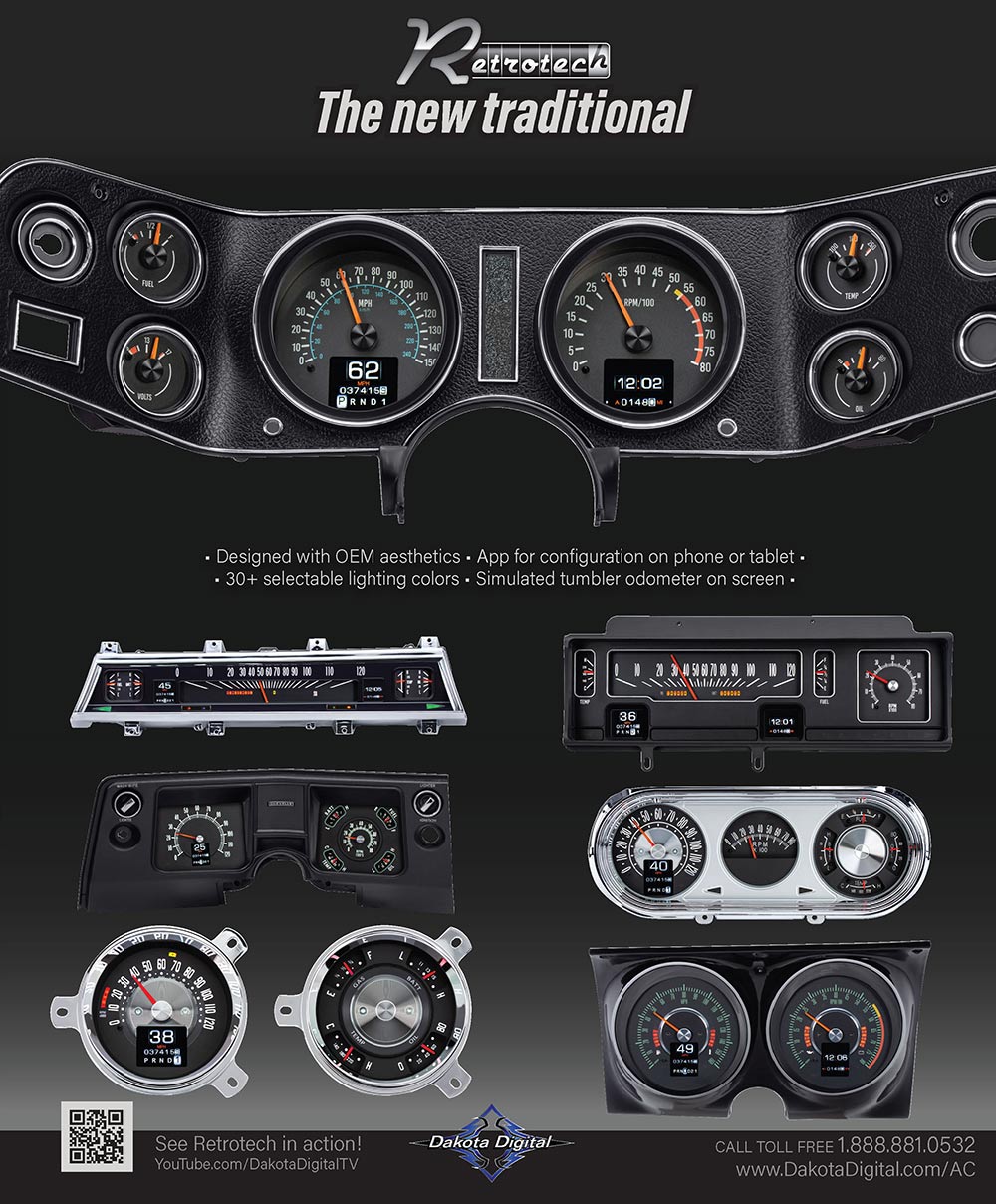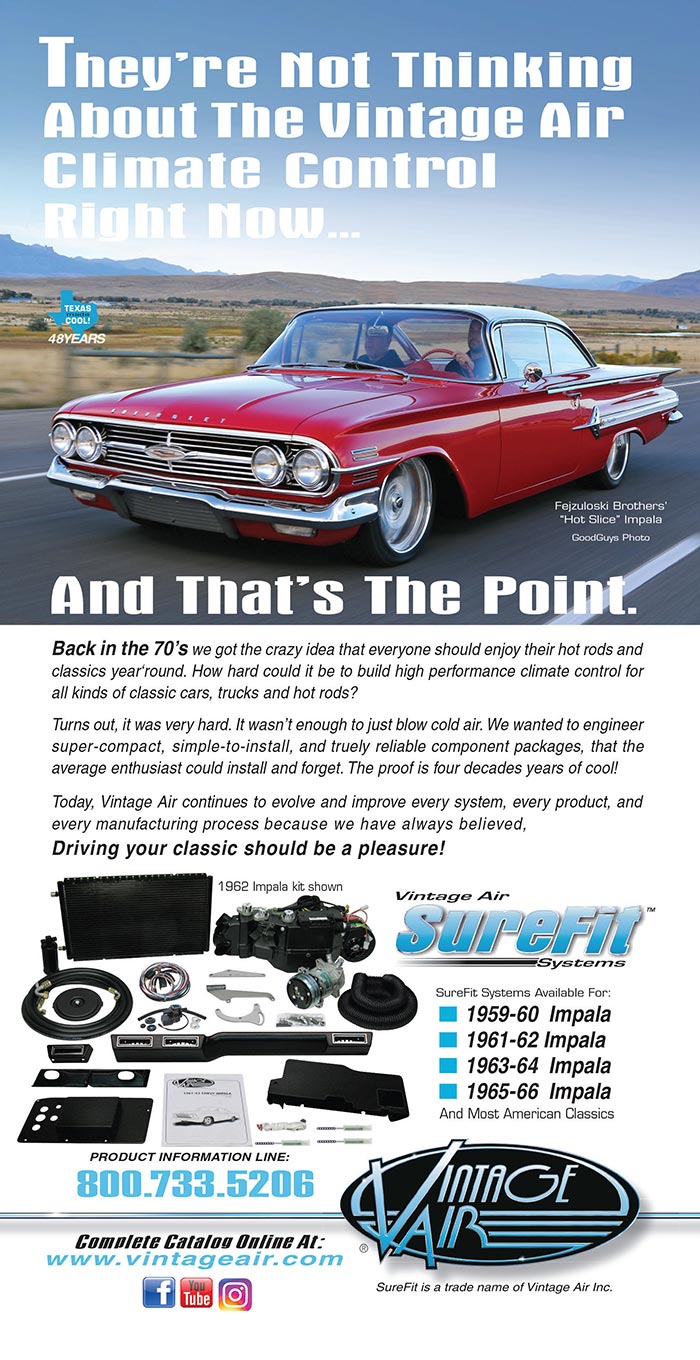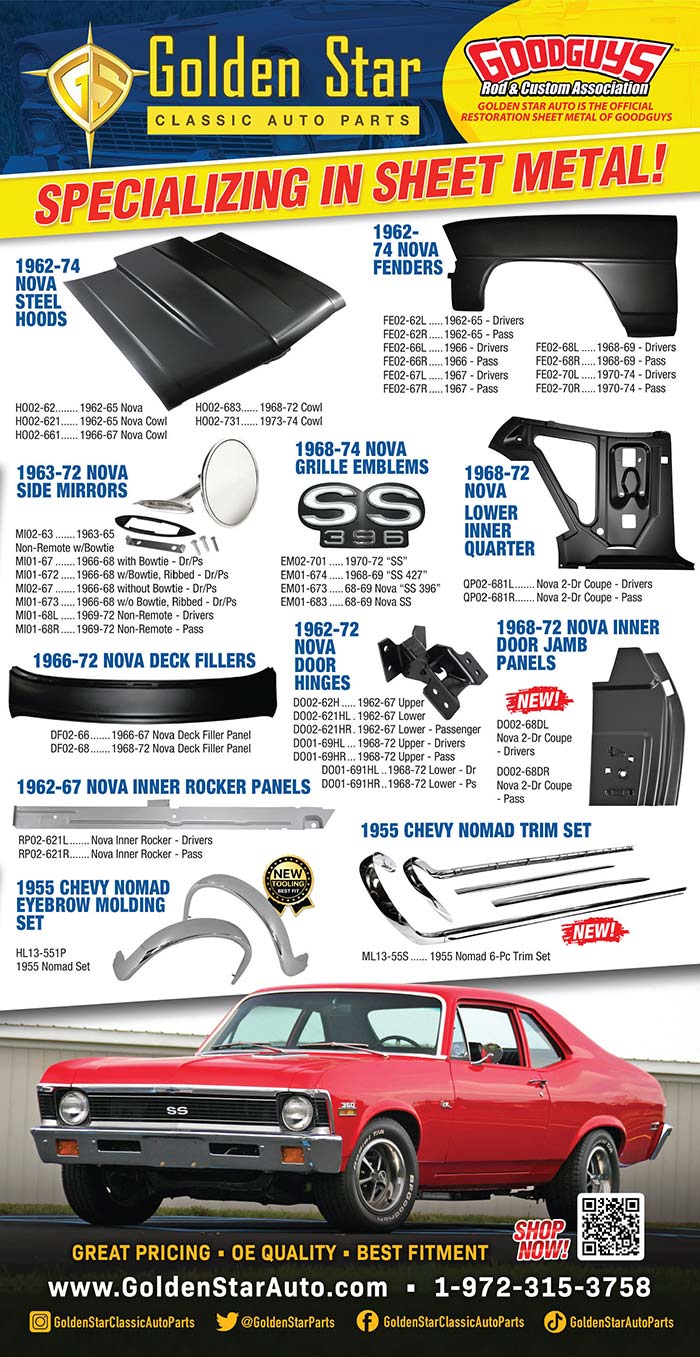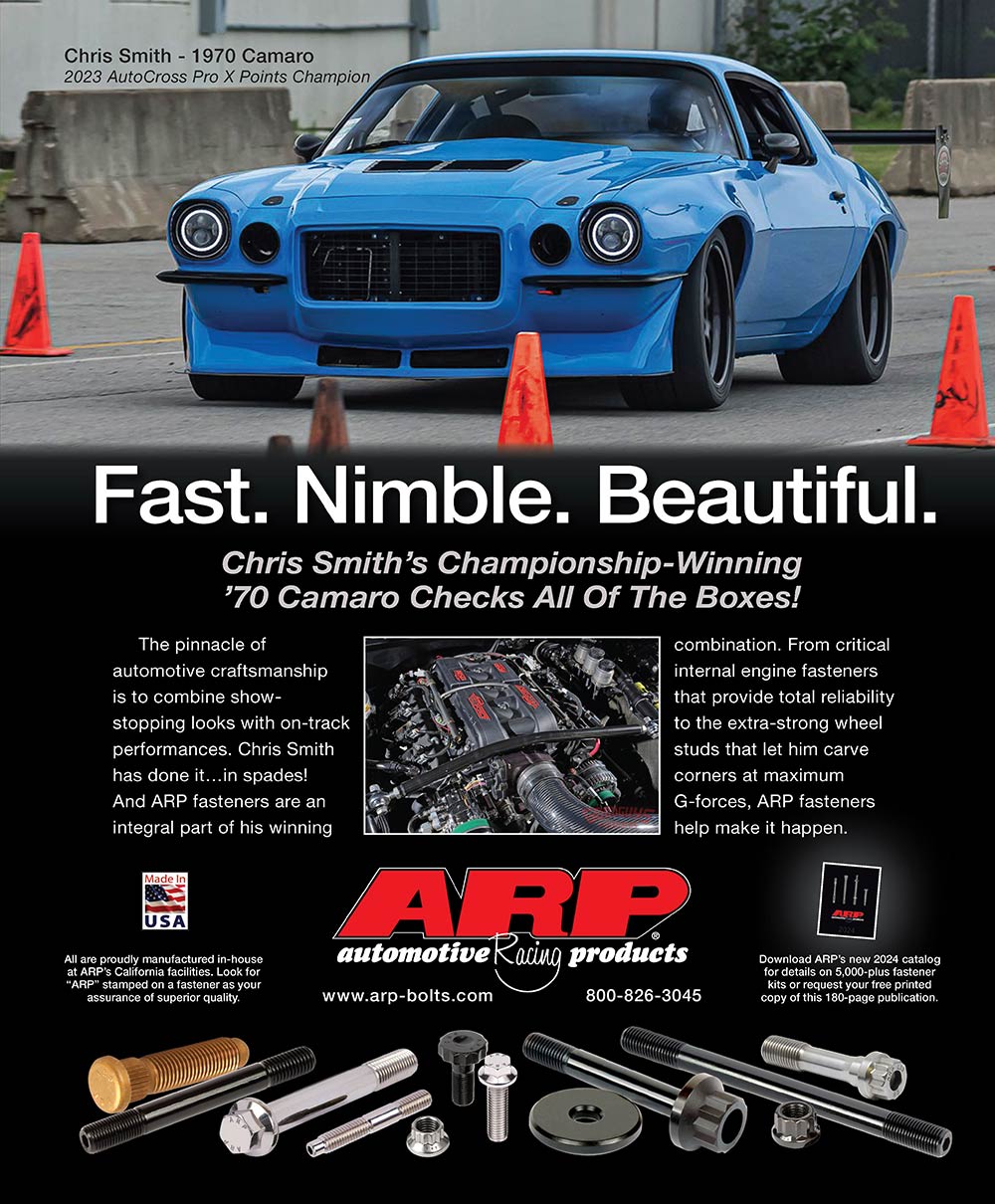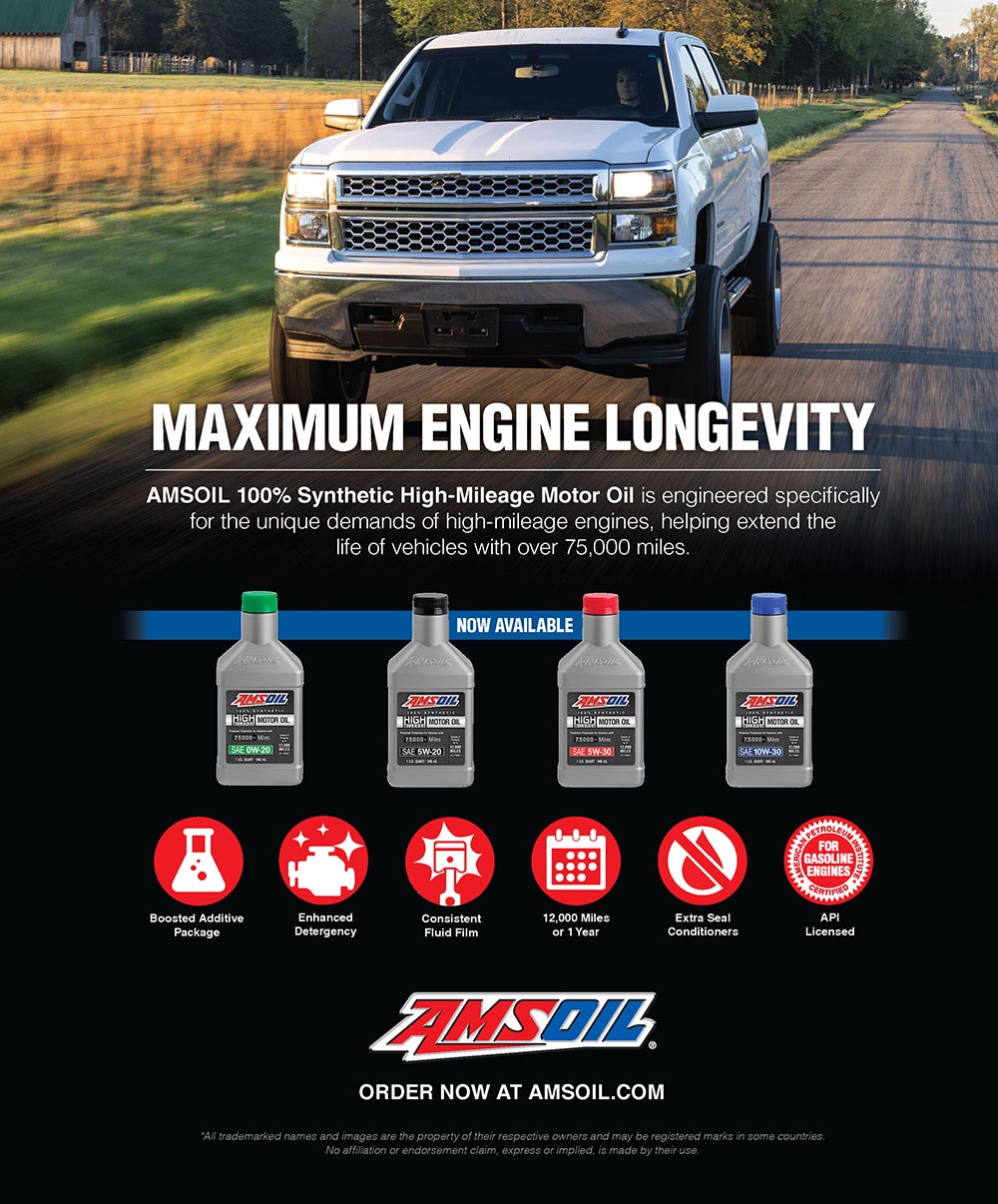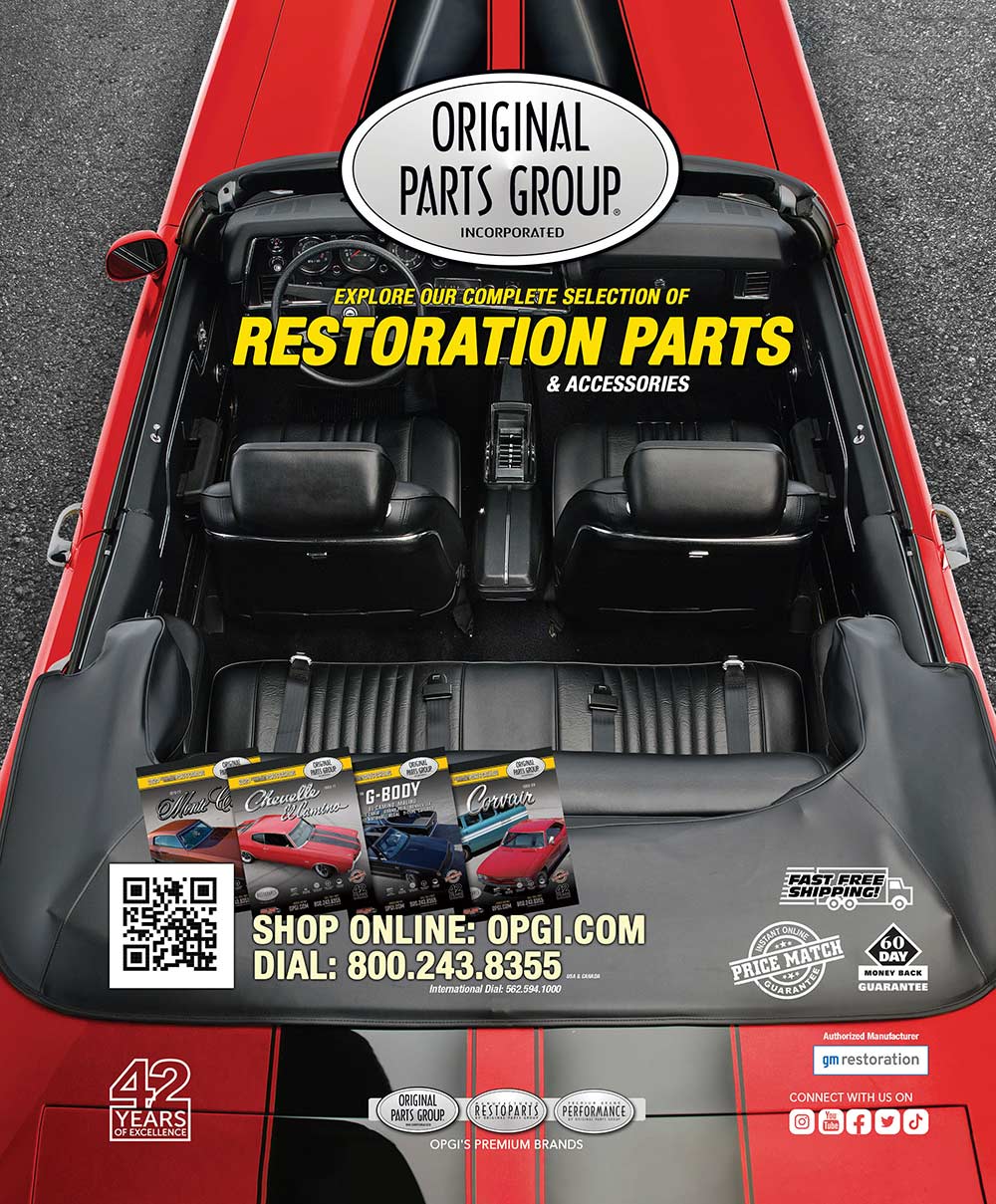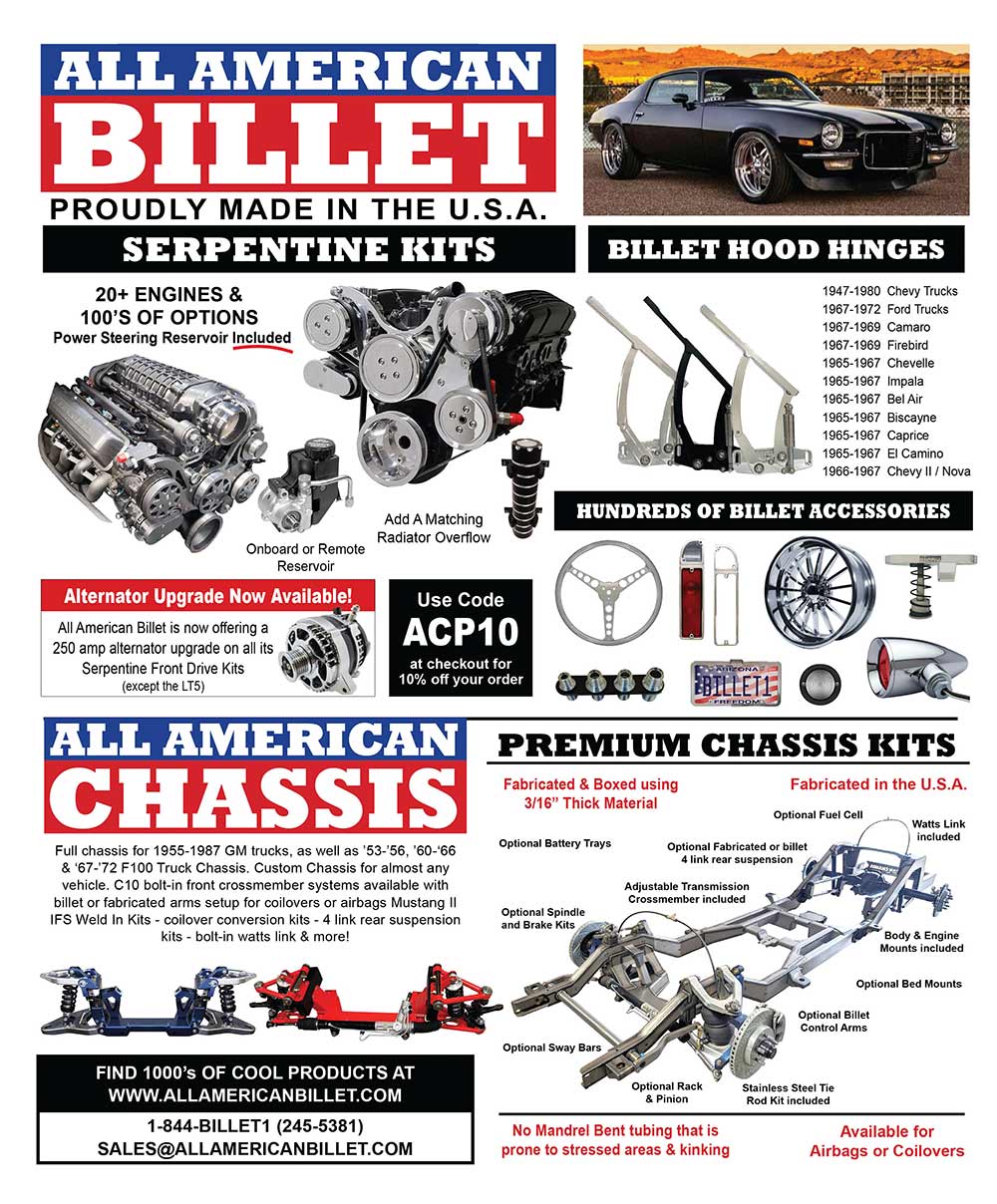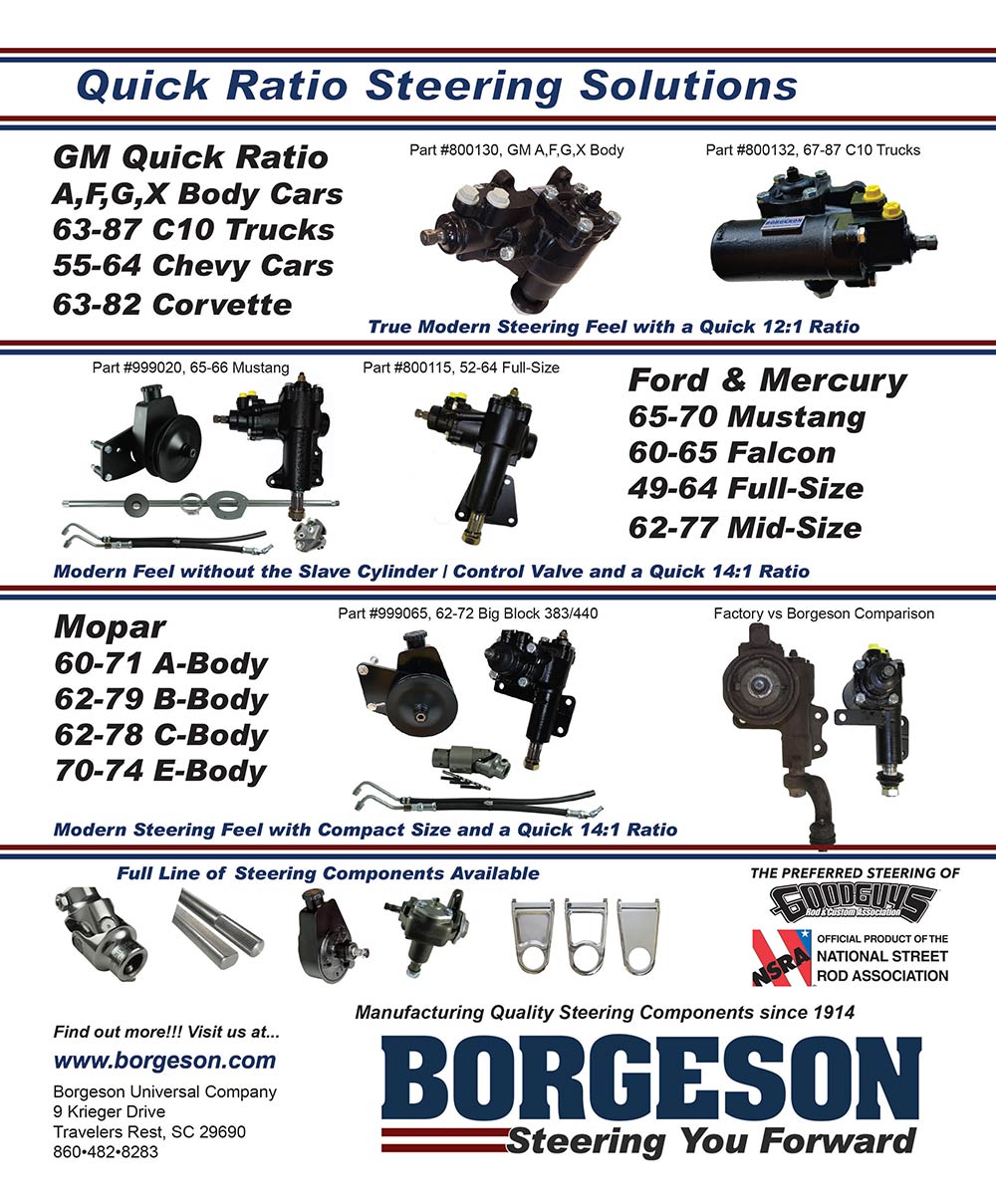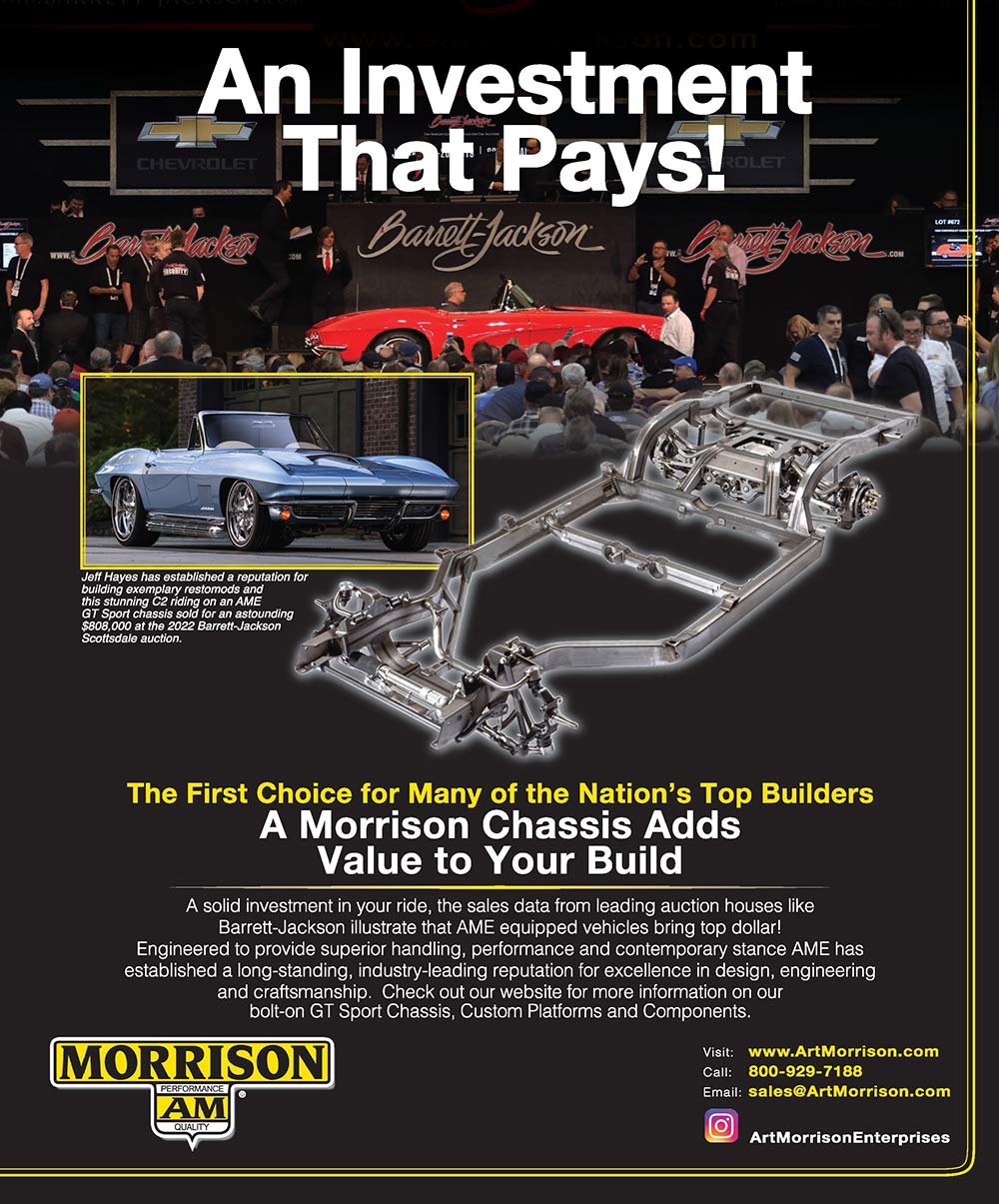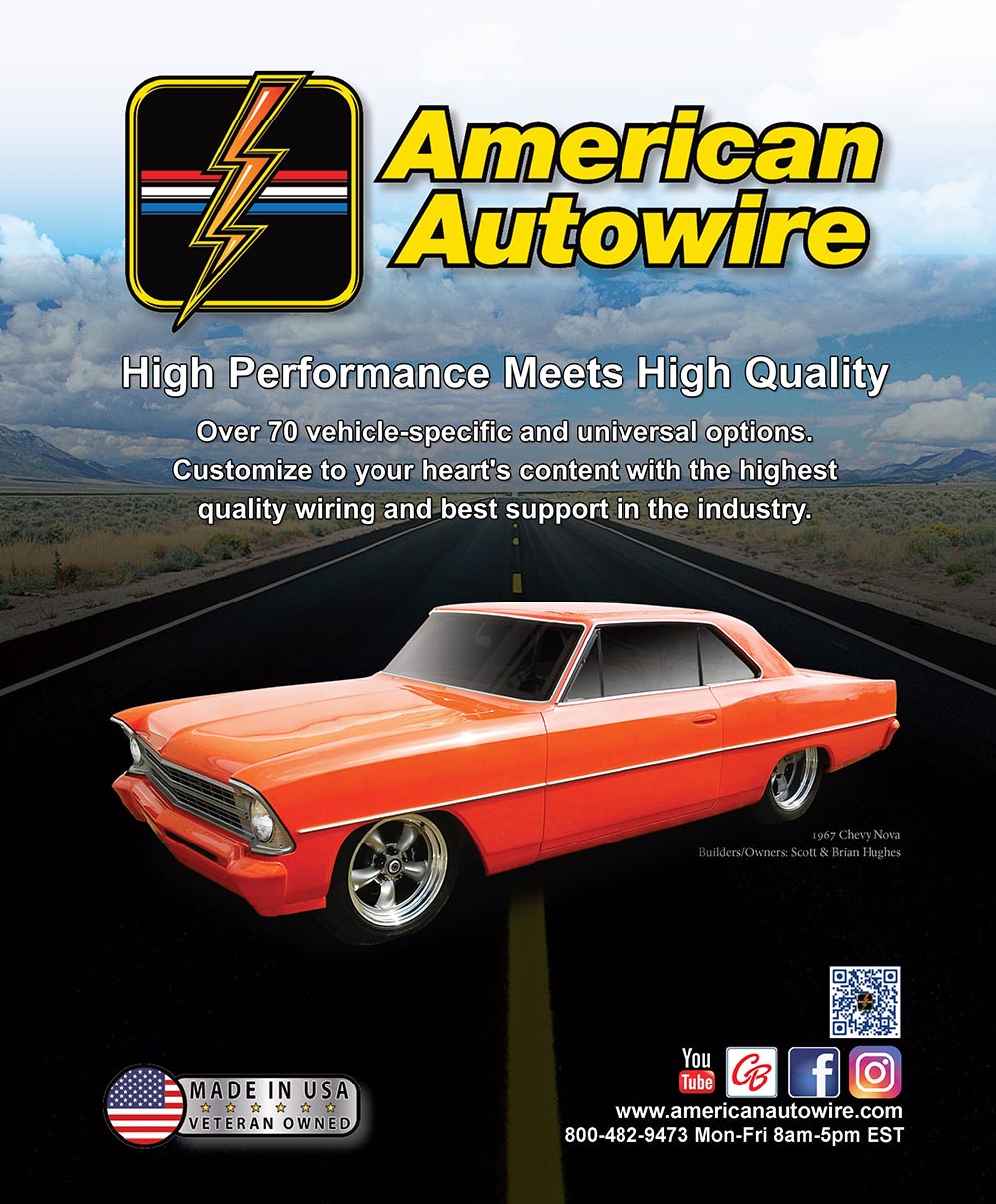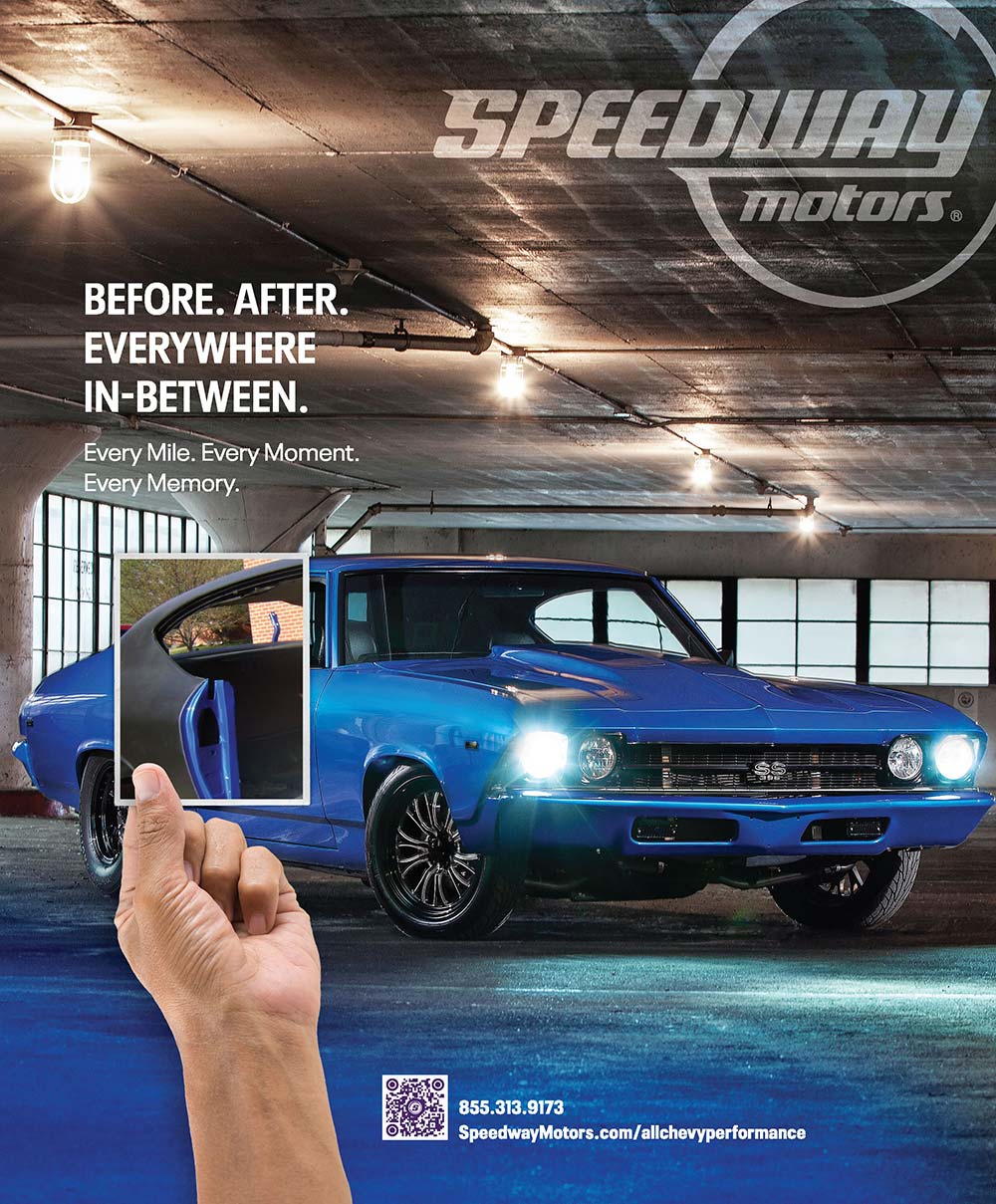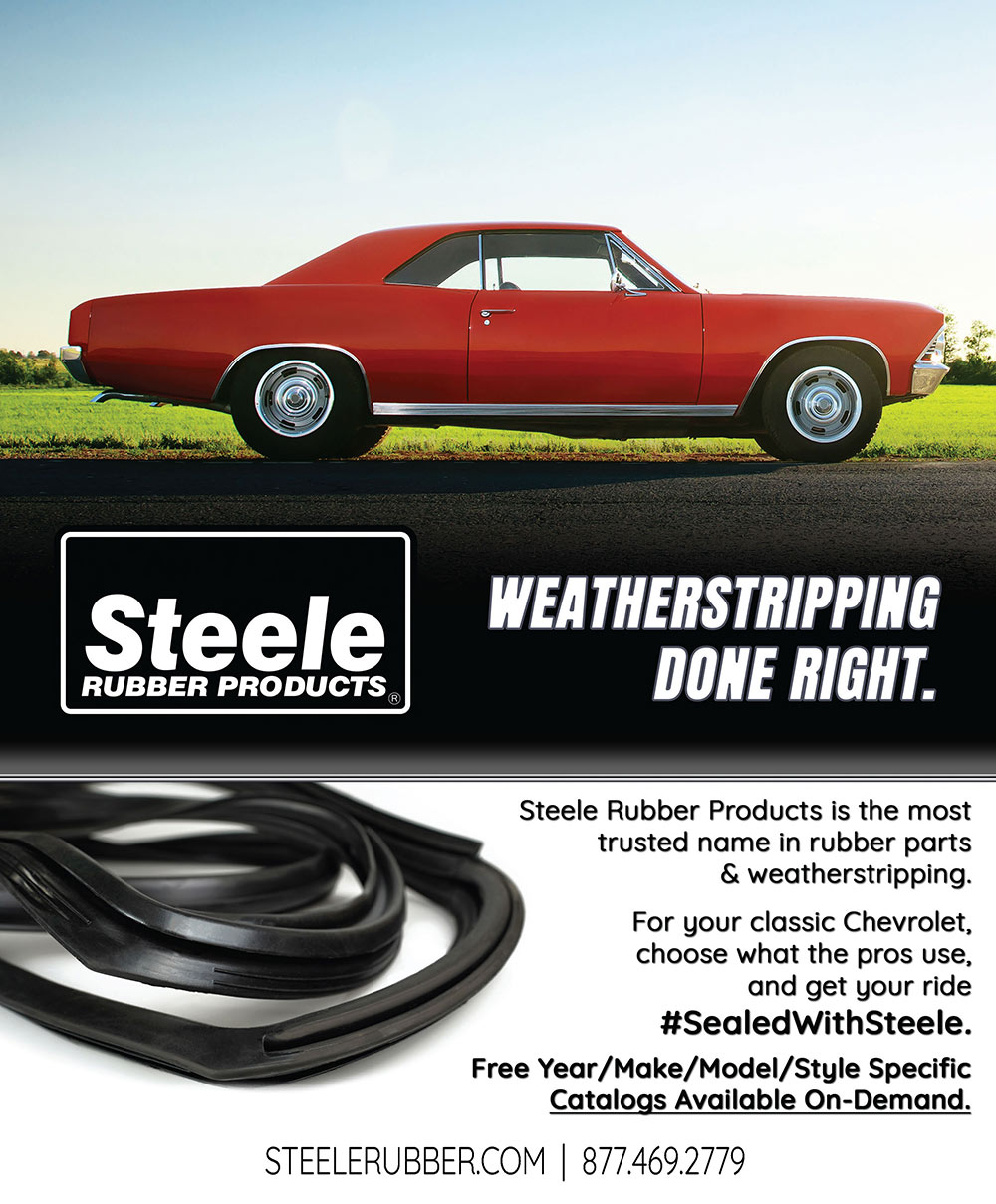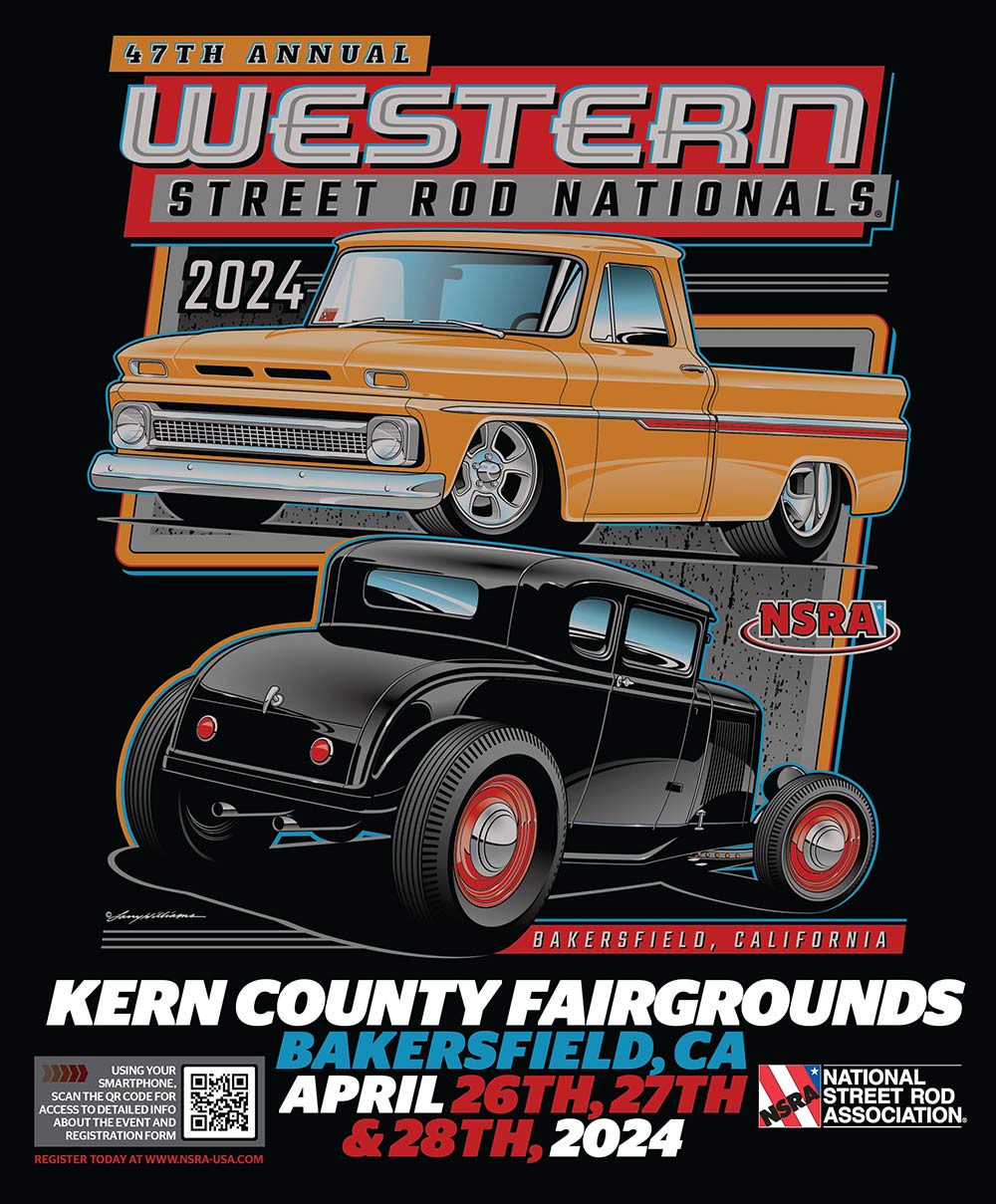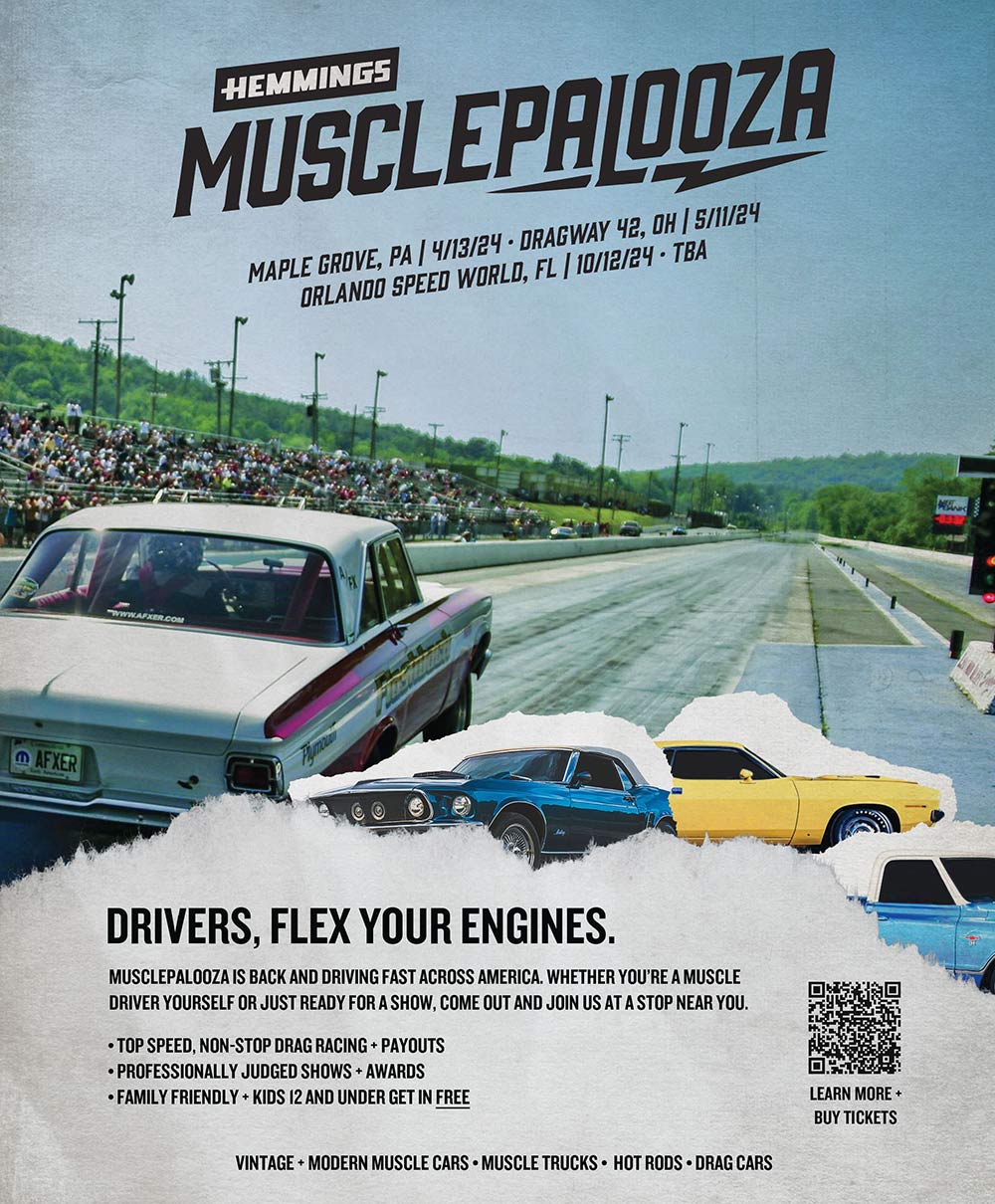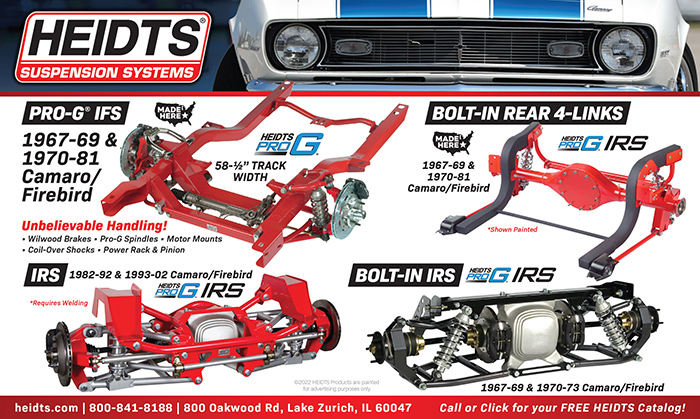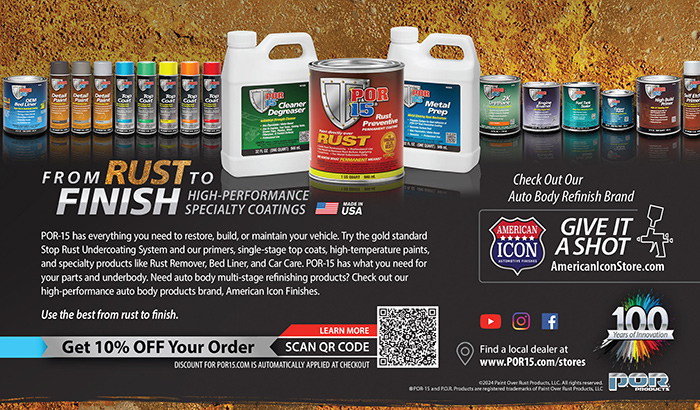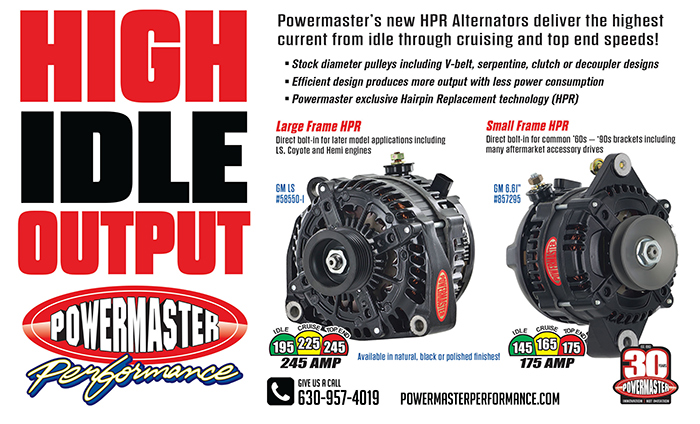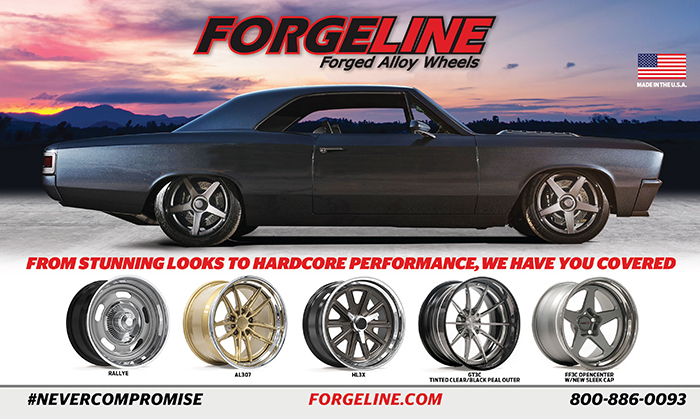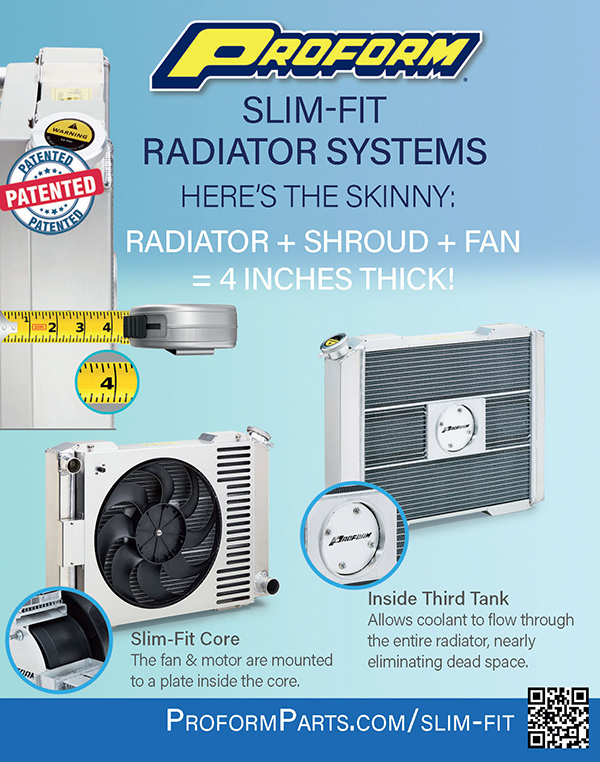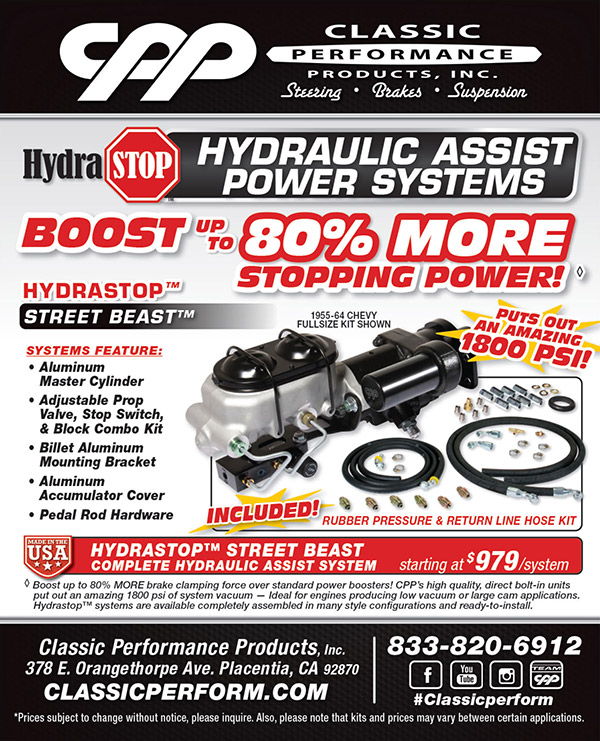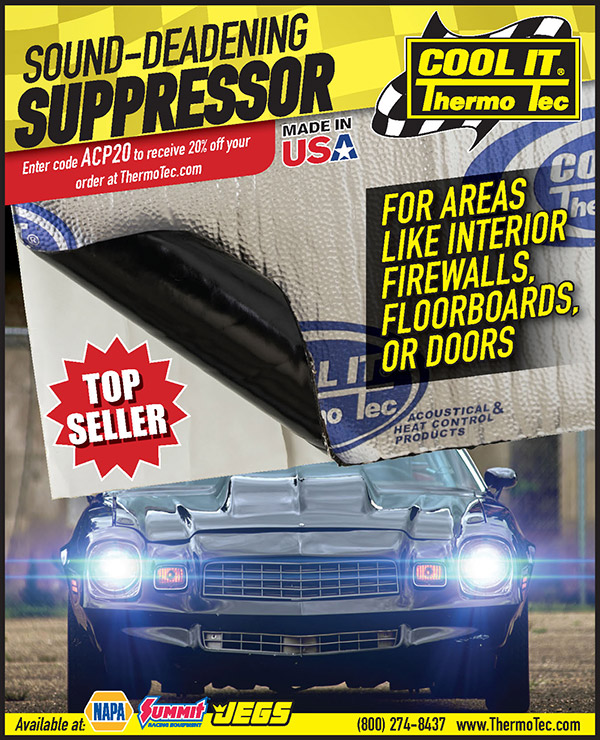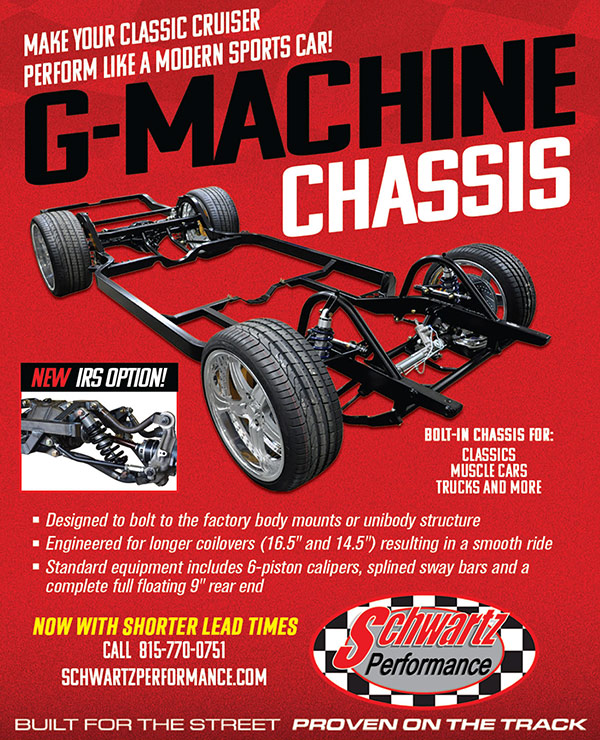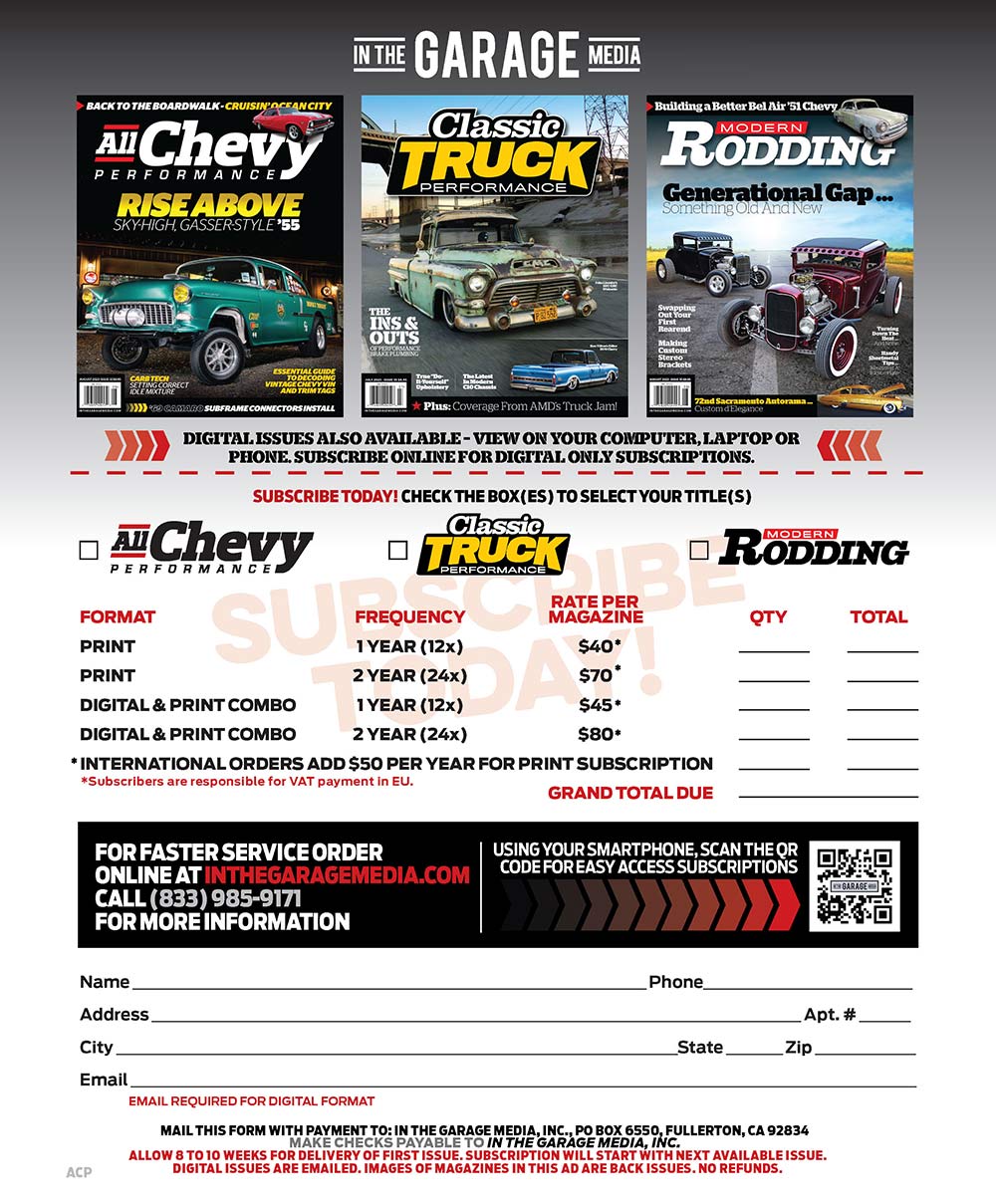
Tri-Five
Detailed Look
at a ’57 Chevy LS Swap
Alternators
Block-Sanding Basics
 TOC
TOC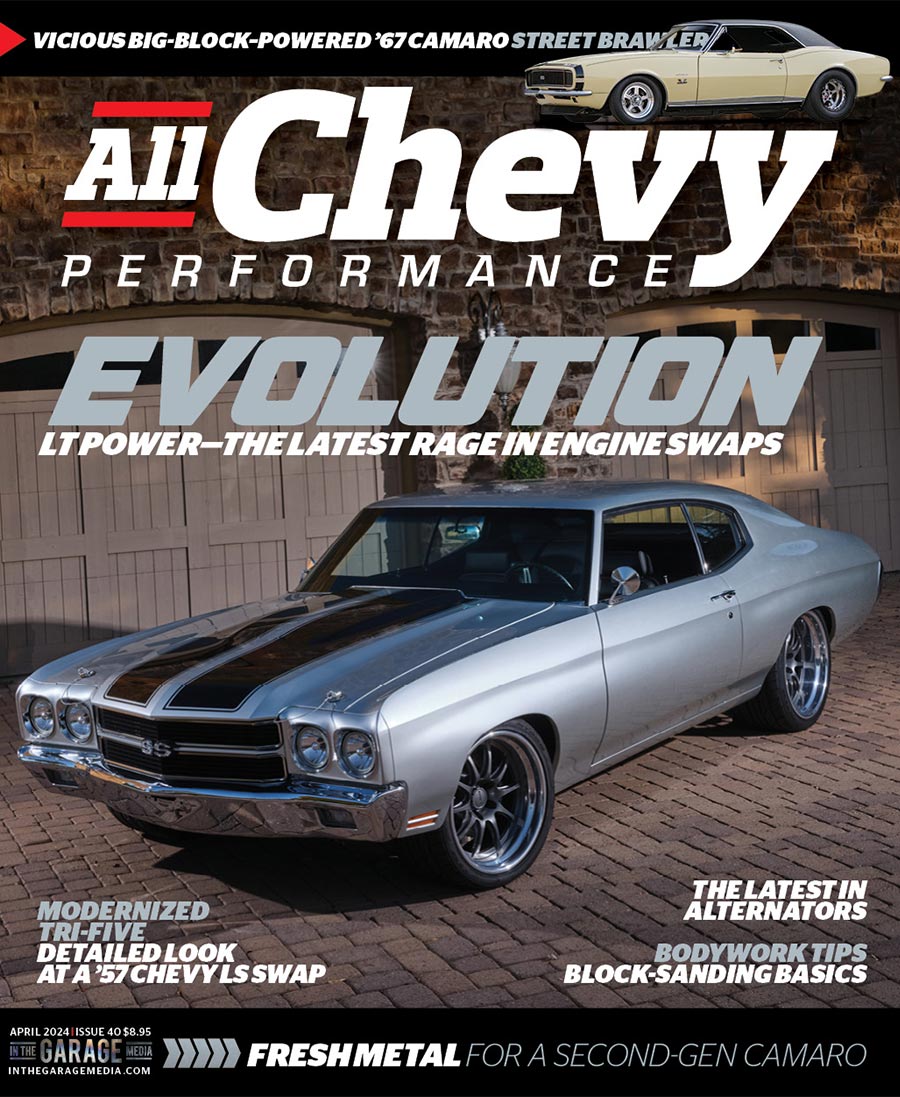
Cover inset: C.L. Braden’s ’67 Camaro carries a drag racing-only aura, yet equipped with a menacing 650hp big-block, this classic F-body has no issues exhibiting superb street manners on a regular basis. Head to page 48 to see more. Photo by Tommy Lee Byrd.



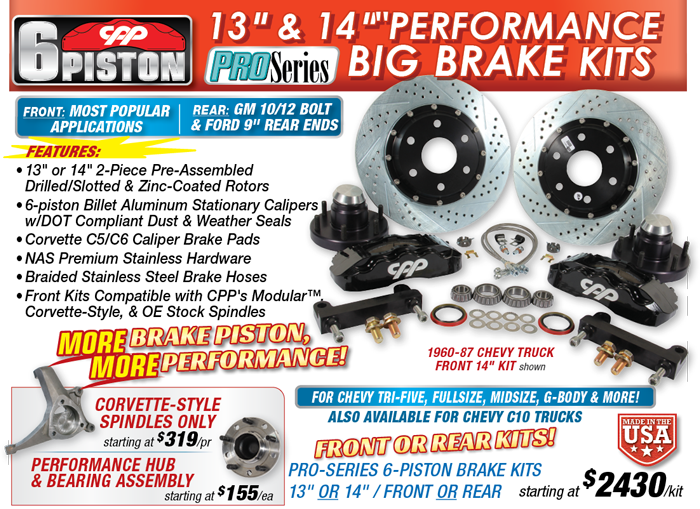
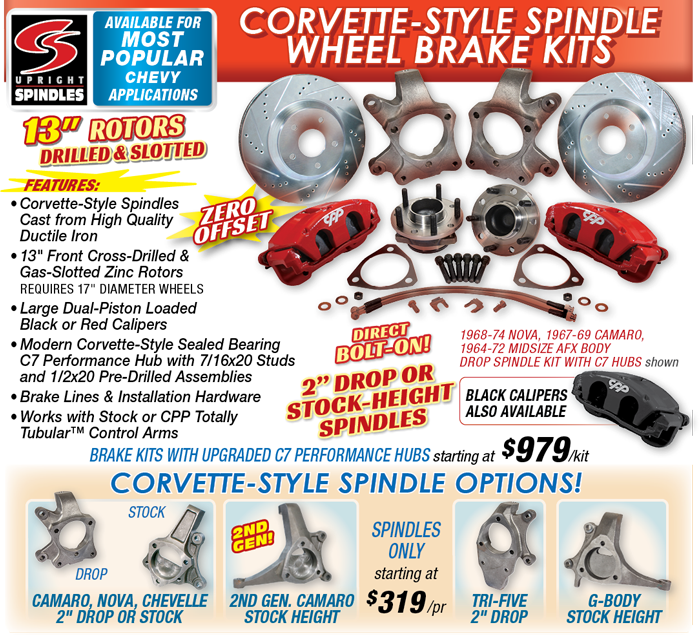
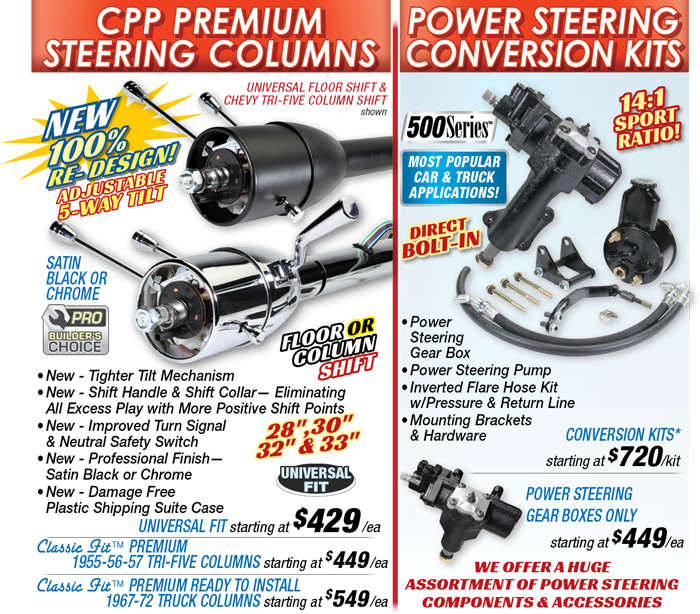
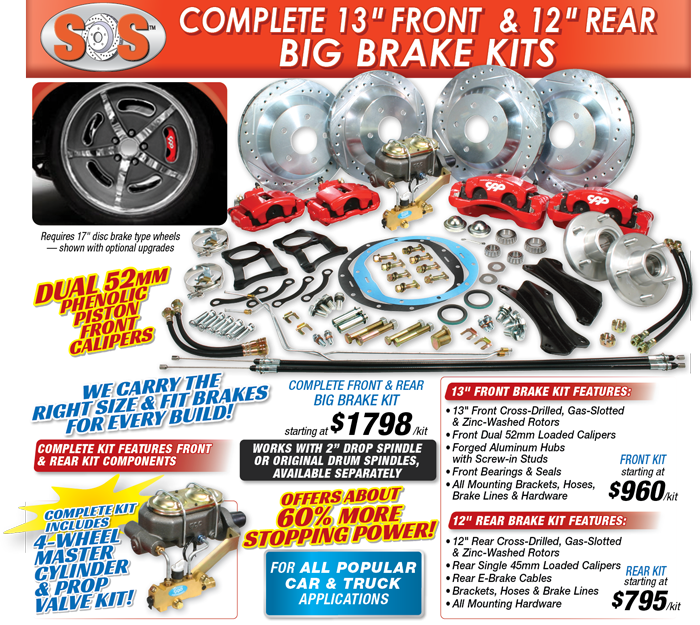
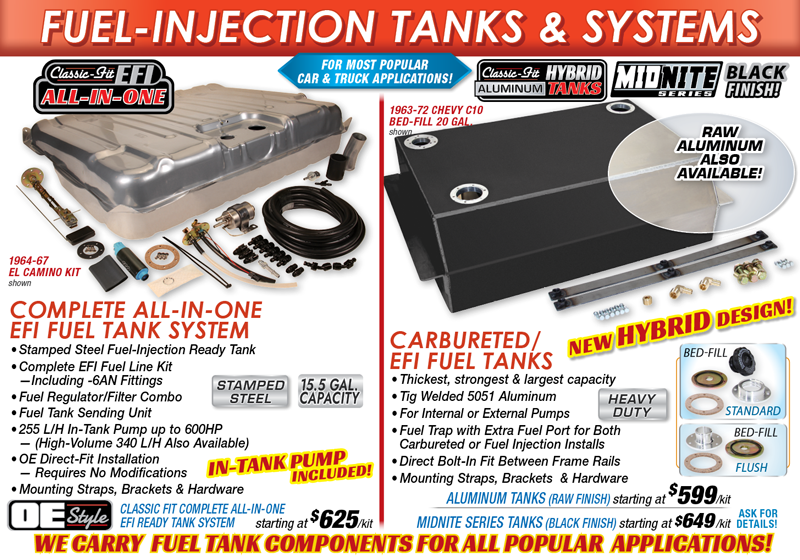

378 E. Orangethorpe Ave. Placentia, California 92870
#ClassicPerform

Wes Allison, “Rotten” Rodney Bauman, Shawn Brereton, Tommy Lee Byrd, Ron Ceridono, Grant Cox, John Gilbert, Tavis Highlander, Jeff Huneycutt, Barry Kluczyk, Scotty Lachenauer, Jason Lubken, John Machaqueiro, Ryan Manson, Jason Matthew, Josh Mishler, Todd Ryden, Jason Scudellari, Jeff Smith, Tim Sutton, Wes Taylor, and Chuck Vranas – Writers and Photographers
Travis Weeks Advertising Sales Manager
Mark Dewey National Sales Manager
Patrick Walsh Sales Representative
ads@inthegaragemedia.com
AllChevyPerformance.com
ClassicTruckPerformance.com
ModernRodding.com
InTheGarageMedia.com
inthegaragemedia.com “Online Store”
For bulk back issues of 10 copies or more, contact store@inthegaragemedia.com
info@inthegaragemedia.com
Editorial contributions are welcomed but editors recommend that contributors query first. Contribution inquiries should first be emailed to info@inthegaragemedia.com. Do not mail via USPS as we assume no responsibility for loss or damage thereto. IN THE GARAGE MEDIA, INC. reserves the right to use material at its discretion, and we reserve the right to edit material to meet our requirements. Upon publication, payment will be made at our current rate, and that said, payment will cover author’s and contributor’s rights of the contribution. Contributors’ act of emailing contribution shall constitute and express warranty that material is original and no infringement on the rights of others.

Copyright (c) 2024 IN THE GARAGE MEDIA, INC.
PRINTED IN U.S.A.



 firing up
firing up
 BY NICK LICATA
BY NICK LICATA
n the early ’60s it seemed just about every American-made muscle car from that era had a brawny and attractive performance appearance–the sexy lines and eye-catching trim, along with blinding chrome bumpers commanded your attention. Growing up in SoCal, I was introduced to muscle cars at around 9 or 10 years of age, and I liked them all. I had no brand loyalty, as to me Mustangs, Camaros, Novas, Chevelles, Chargers, Darts, Firebirds, GTOs, and even big ol’ Oldsmobiles with the proper stance combined with a deep rumbling exhaust tone were equally impressive. Back then it was apparent that auto designers were on point, as just about any ’60s car could be transformed into a cool-looking ride by bolting on a set of mag wheels wrapped in wide white-lettered tires, then given a cool rake. Converting the family cruiser into an attention-grabbing street machine required little effort.
Today, it’s those iconic designs, raw horsepower, and timeless style that still attract many of us to these noisy old vehicles. After the mid ’70s domestic car companies seemed to have lost interest in the classic design elements that hooked so many muscle car fans early on. Be it safety mandates, noise regulations, fuel efficiency, or a host of other reasons, it appeared as though American carmakers missed the mark when it came to building cars with alluring design elements and anything performance related.
If you were around in the ’70s and ’80s then you remember how the sporty lines of ’60s cars were replaced with newer cars becoming unattractively square. The Ford Fairmont and Chevy Malibus are perfect examples. Even Ford’s Mustang had a square chin, although in 1979 the nose became slightly angled, but it still had square headlights, so there’s that. Yes, the third-gen Camaro had something going for it; although it too was square, that squareness was disguised with a lower ride height than most cars of the era—but still square. And don’t get me started on the Dodge Reliant K car. That thing looked like a used fireplace brick and had the personality of a pallet jack. My apologies to pallet jacks and fireplace bricks all over America, you didn’t deserve that.
 PARTS BIN
PARTS BIN


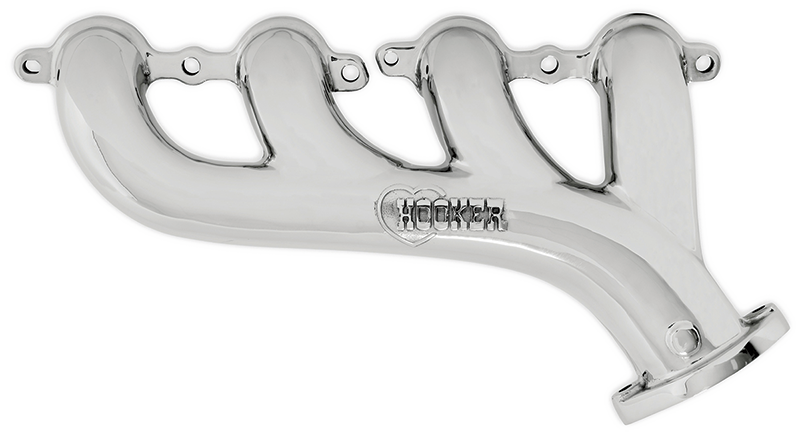
1. Stainless Steel LS Exhaust Manifolds

 Text & Rendering by Tavis Highlander
Text & Rendering by Tavis Highlanderonvertibles didn’t used to get a ton of attention, but now thanks to modern chassis technology you can add back that lost rigidity and create a potent performer. That’s exactly what’s happening with this ’69 Camaro being built at A.P.S. Muscle Cars. A Roadster Shop chassis will allow for modern LS power along with the ability to run big brakes and wheels with better suspension than ever before.
On the outside the car will be blacked out from front to back except for a bright blue accent on the calipers and stripe. HRE S207 wheels will be blacked out as well to match the look. BBT Fab side mirrors have an updated appearance without being too modern. A stinger hood and some custom side vent trim rounds out the package.
 FEATURE
FEATURE
Photography BY NotStock Photography
oe Rasnick is one of those guys whose imposing frame might be a bit intimidating to some at first sight, but at an impressive 6 feet 8 inches, his size doesn’t define his personality. He’s pretty easy-going until he sets his sights on something, and that’s when focus takes over. “I have always wanted a ’70 Chevelle—big-block powered, of course. When I was a young high school kid, I remember seeing the guys with cool cars getting the cool girls, and that’s pretty much what got me interested in cars,” Joe laughingly says. “Today, it’s mainly about having the car I’ve always wanted.”
 TECH
TECH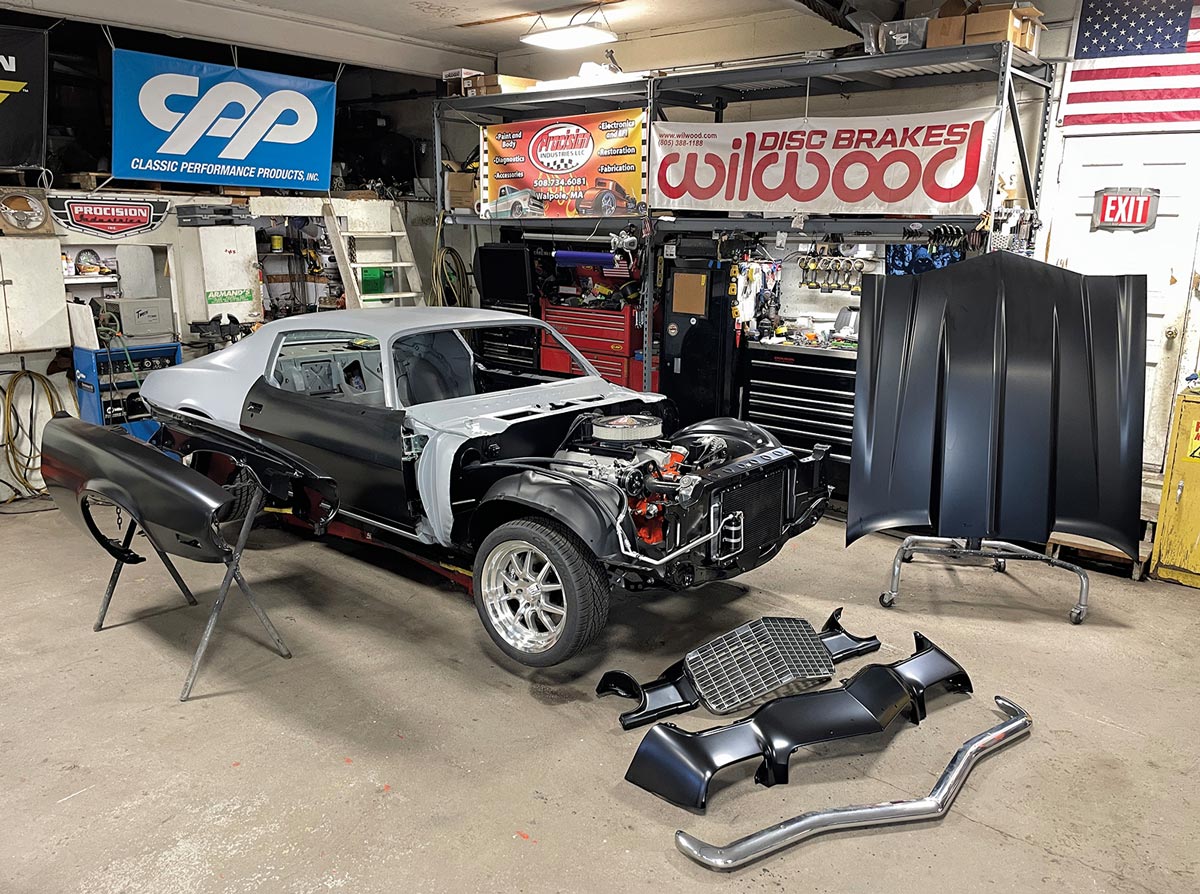


 Photography by The Author
Photography by The Authorhere comes a moment in every buildup where you need to address the status of the body. Many times it can be when all of the mechanical and chassis fabrication upgrades are finally completed. It’s always good to have a plan of action regardless of whether you’re going from ground-zero or taking it on in steps to reach your goals. Regular readers of All Chevy Performance will recognize the ’71 Camaro laid out across our pages as having started its journey as a picked-down shell that was totally bare bones and barely a roller. It’s certainly come a long way through past articles addressing the suspension, brakes, LS driveline, cooling, and exhaust.
We recently followed up at Procision Industries in Taunton, Massachusetts, where shop owner Pat O’Brien was preparing to move forward on the next step of addressing the body. Seeing that the car was void of any front sheetmetal, it was a perfect time to look into options and address ideas of how he would like the styling of the car to look. O’Brien contacted Auto Metal Direct (AMD) to check out their vast catalog of sheetmetal components as well as everything needed to complete the full assembly of the front end. Any particular needs for your restoration project, from body components to glass, electrical, trim, and everything else you could imagine, they’ve got it covered.
 Feature
Feature
John Packard’s ’67 Nova SS
 Photography by THE AUTHOR
Photography by THE AUTHORmbarking on the monumental task of crafting a custom car is more than a mere project, it’s an exhilarating voyage of self-expression echoing through the curves and contours of metal and machinery. Whether one immerses themselves as the hands-on artisan or entrusts the creation to skilled craftsmen, the end result becomes a masterpiece of individuality. Yet, in the labyrinthine realm of car building, the term “finished” becomes a paradox; a puzzle that perplexes both creator and observer alike. While some endure what feels like an eternity for completion, others, even upon reaching the finish line, find themselves haunted by the specter of alternative possibilities. These contemplations serve as the seeds of perpetual metamorphosis, revealing that for some, a build is never truly finished but rather an evolving work of art.
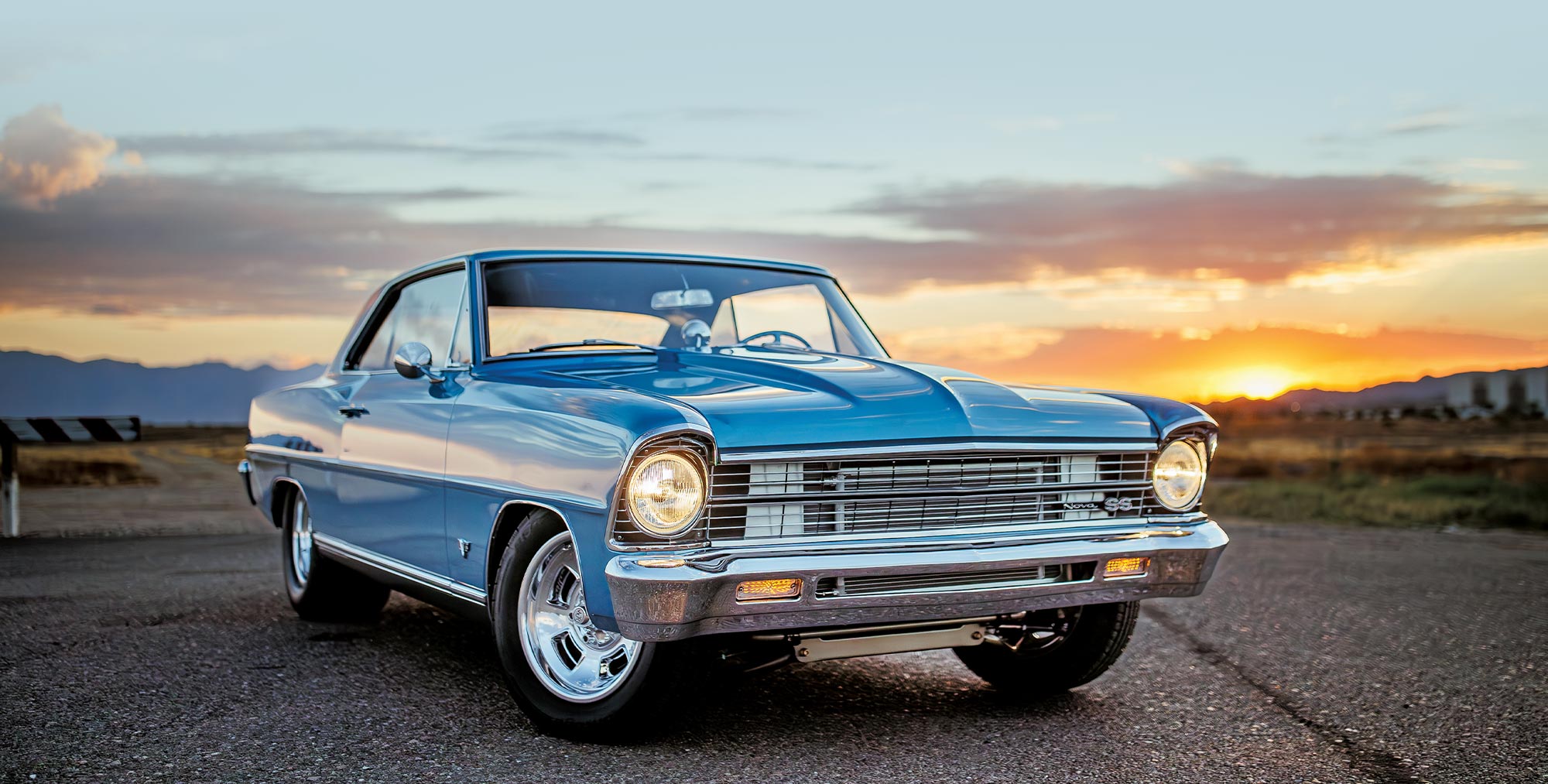
 TECH
TECH
By Barry Kluczyk  Photography by The Author
Photography by The Author
“We might spend 400 hours on the body surface of a restoration project and only 8 of them are actually spent in the spray booth to lay on paint,” restorer Nyle Wing says. “The rest of that time is spent block sanding.”
Sanding, sanding, and more sanding. It’s the method of smoothing the small surface waves and high and low spots to ensure the panels will be as straight and smooth enough for a mirror-like finish.
“A great paintjob is all about the prep and that’s what we’re talking about here,” Wing, who’s been restoring muscle cars for about 30 years, says. “You can lay on the color flawlessly, but if the surface isn’t perfectly smooth to begin with, you’ll never achieve a show-winning result.”
 FEATURE
FEATURE

 Photography BY THE AUTHOR
Photography BY THE AUTHORf you ever get bit by the drag racing bug, there isn’t enough ointment in the world to stop the itch. You’ll think about it day and night, and you might even spend your kid’s college fund trying to turn on a win light. If you’re lucky, your significant other will support the habit and your kids will join the fun, too. For C.L. Braden, a hard-working gearhead from East Tennessee, drag racing was a big part of his life, so anything less than a big-tire, tube chassis powerhouse is just a street car. Such is the case with this ’67 Camaro RS/SS, a car that he put together specifically for the street, even though most would consider this a pretty radical setup.
 TECH
TECH Photography by
Photography by ne of the common upgrades made to improve the stopping ability of a drum brake–equipped Chevrolet is a disc brake swap. In our particular case, the car needing better binders was a ’63 Corvette, so we turned to Wilwood for help.
Wilwood has been a leading manufacturer of high-performance brake system components since 1977, and among their long list of products are a variety of disc brake conversions. For our application we wanted more modern brakes, but we also wanted to keep our vintage five-spoke wheels. That meant two things: the new brakes had to accommodate 15-inch-diameter wheels with a minimum tread width increase due to the wheel’s 7-inch width. To meet our needs, we decided on Wilwood’s Classic Series Dynalite front disc brake kit (PN 140-14663-R, the R indicates red powdercoated calipers). This new kit fits ’55-64 fullsize Chevrolets and ’63-64 Corvettes. It comes with large 11.5-inch rotors, forged Dynalite-M calipers, caliper mounting brackets, hardware, and complete bearing kits.
 FEATURE
FEATURE
 Photography BY NotStock Photography
Photography BY NotStock Photographyred Koss is a self-proclaimed “car nut.” He’s been one his entire life. His love for cars started with building model cars and racing slot cars, and later in life he spent weekends drag racing in NHRA’s Super Gas class. Immersed in the car world, this one-of-a-kind ’69 Chevelle is his latest, but before that he owned a host of other hot rods, including his first car that just so happened to be a ’69 Chevelle SS as well.
But this here Chevelle build didn’t happen overnight—not even close. “I searched for years looking for a solid, rust-free example to start as a project, but dozens of leads ended up being rusted-out hulks,” Fred explains. “I finally located one in satisfactory condition, with the plan being to restore it and then arm it with a big-inch big-block and a Turbo 400 to have some fun. I figured the process would take me three years, tops. That was over 25 years ago.”
Yep, that’s a familiar story when it comes to restoring cars. In Fred’s situation, it was the demands of work, spending quality time with the wife and kids, and overall life in general that took precedence. Which is not a bad thing, as Fred adheres to the idea that family comes first.
 TECH
TECH Photography by The Author and Courtesy of the Manufacturers
Photography by The Author and Courtesy of the Manufacturerst’s a common scenario. You’ve just added a larger radiator with a pair of performance electric fans to help cool that hot small-block. Everything is working great until you take your Camaro out for an evening cruise at the local hangout. That’s when you notice that at idle with the headlights on and both fans running the voltmeter is sitting on 11.5 V instead of the 14 it used to read at idle. Plus, the headlights get brighter when you rev the engine. Something is amiss.
In the early days of muscle cars, alternator output was in the range of 40 to 60 amps. There just weren’t that many electrical accessories that required more than perhaps 30 amps. But today, we have a ton of electrical components that place an increasing demand on the charging system. Today’s new vehicles are commonly equipped with 140- to 160-amp alternators. The same is true for modern muscle cars running items like electric fans, a high-pressure fuel pump, A/C, electric vacuum pump for power brakes, heated and cooled seats, and a host of other amenities.
 FEATURE
FEATURE

 Photography BY Jason Matthew
Photography BY Jason Matthewt’s not often a vintage car, especially one from the early ’60s, stays within the ownership of one family throughout its entire existence. But this ’64 Chevy Impala has been with Montie Sisco’s family since his grandfather purchased it new off the showroom floor back in 1964.
For years the fullsize Chevy was used for typical family duties and was his grandfather’s daily. After serving its purpose back in 1970, he offered it to Montie for $650. Monte had just gotten his driver’s license, so he jumped at the chance and purchased the Bel Air for his grandfather’s asking price. Introduced to the car scene at age 12, Montie would hang out with his gearhead brother-in-law while he was wrenching on cars, and he also let him tag along on cruises and get-togethers at the local burger joint. That introduction ignited a love for everything automotive related and the ’64 totally fit the bill.
 TECH
TECH

By Ryan Manson  Photography by The Author
Photography by The Author
f you’re a regular reader of All Chevy Performance, you’ll probably recognize our ’57 Chevy 210 wagon that we’ve been building in the Clampdown Competition workshop for our buddy Bruce Valley. So far, we’ve replaced the front and rear suspension and added power steering, among other things. We also did a serpentine pulley system install on the LS3 Connect & Cruise engine kit in anticipation of its installation between the ’rails, which is where we’ve now found ourselves.
For a quick recap, Valley wanted to upgrade the old wagon with power steering, A/C, and an overdrive transmission. Quickly going over what was involved to make said upgrades to the existing 350ci small-block Chevy/Muncie four-speed combo, it was an easy decision to shift gears and proceed with an LS upgrade. Since all the components needed to be purchased, whether the 350 was used or we went the LS route, Valley was quickly convinced that what he really wanted was a more comfortable, reliable, user-friendly experience, with whatever that required—which meant we were going the LS route.
With that in mind, we recommended the Chevrolet Performance Connect & Cruise LS3 package. Rated at 430 hp, the 6.2L powerplant would be more than capable of hauling Bruce’s big wagon around town, and thanks to the 4L65-E transmission and its 0.70:1 final drive, it will be even more suited to efficiently cruise down the highway than with the old Muncie. Years of use and millions of miles traveled in nearly every marque made by GM make the LS and their relative electronic components dead reliable when compared to the electronics of yore.
Advertiser
- All American Billet23
- American Autowire33
- AMSOIL11
- Art Morrison Enterprises31
- Auto Metal Direct57
- Automotive Racing Products9
- Borgeson Universal Co.29
- Classic Industries27
- Classic Performance Products4-5, 87, 92
- Dakota Digital91
- FiTech EFI79
- Forgeline Motorsports87
- Golden Star Classic Auto Parts7
- Heidts Suspension Systems81
- Hemmings61
- JJs Rod & Custom89
- Lokar2
- National Street Rod Association59
- Original Parts Group13
- Paint Over Rust Products81
- Powermaster Performance85
- Schwartz Performance89
- Scott’s Hotrods73
- Specialty Auto Parts USA, Inc.87
- Speedway Motors43
- Steele Rubber Products45
- Thermo-Tec Automotive89
- Tuff Stuff Performance Accessories79
- Vintage Air6
- Wilwood Engineering47








